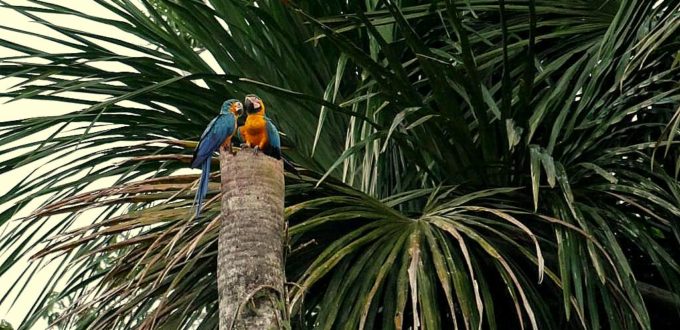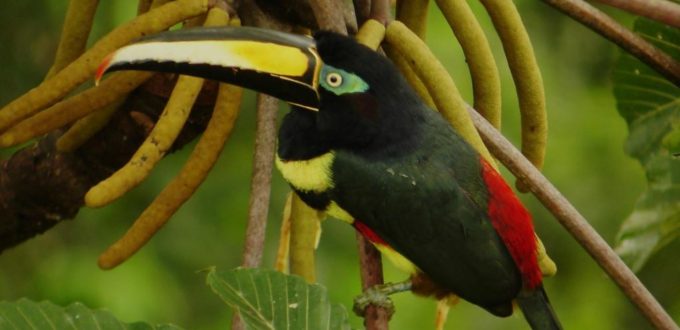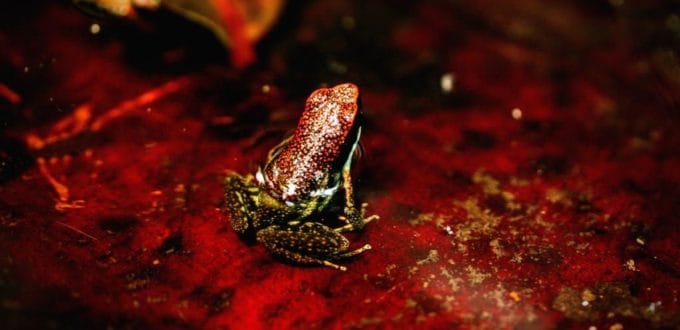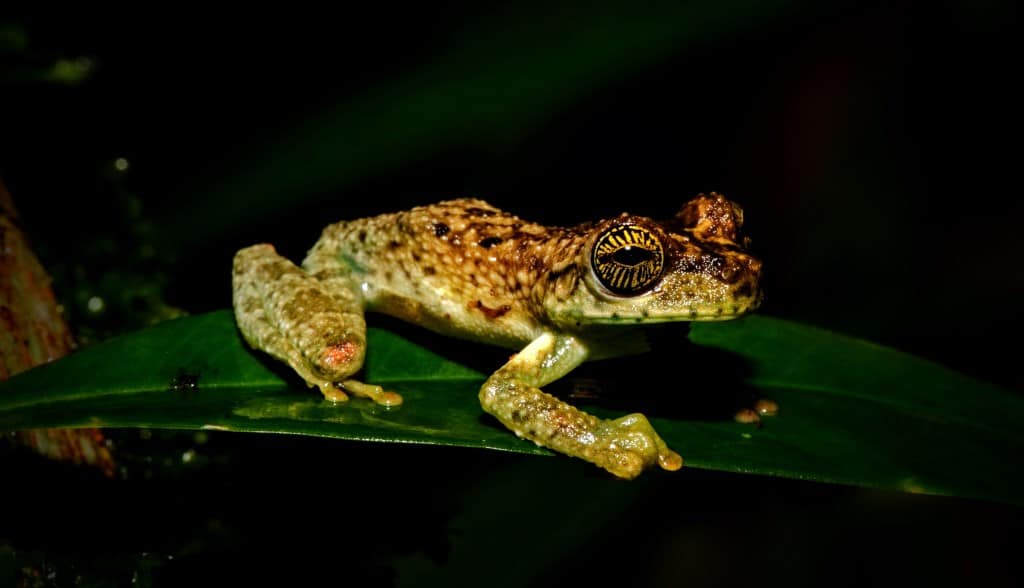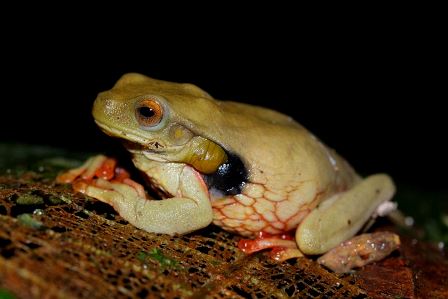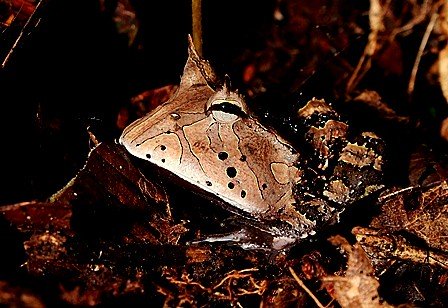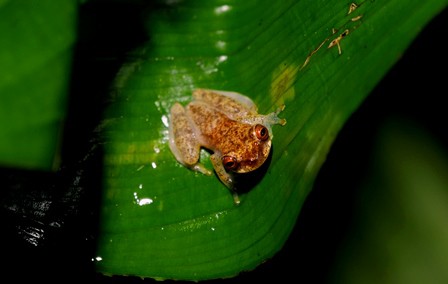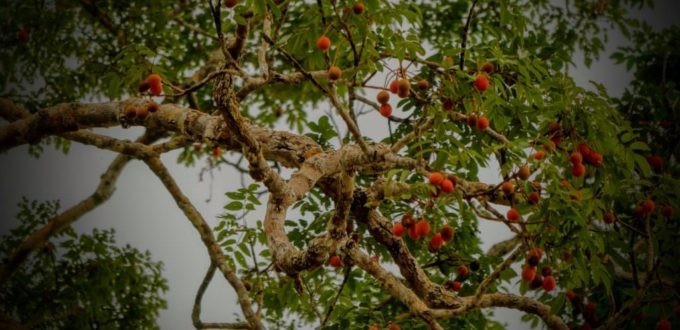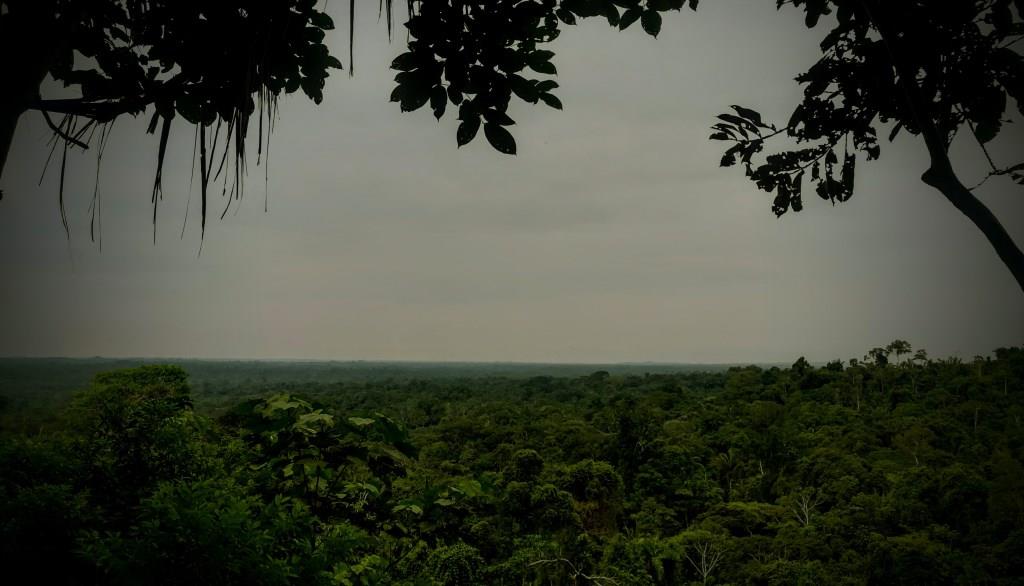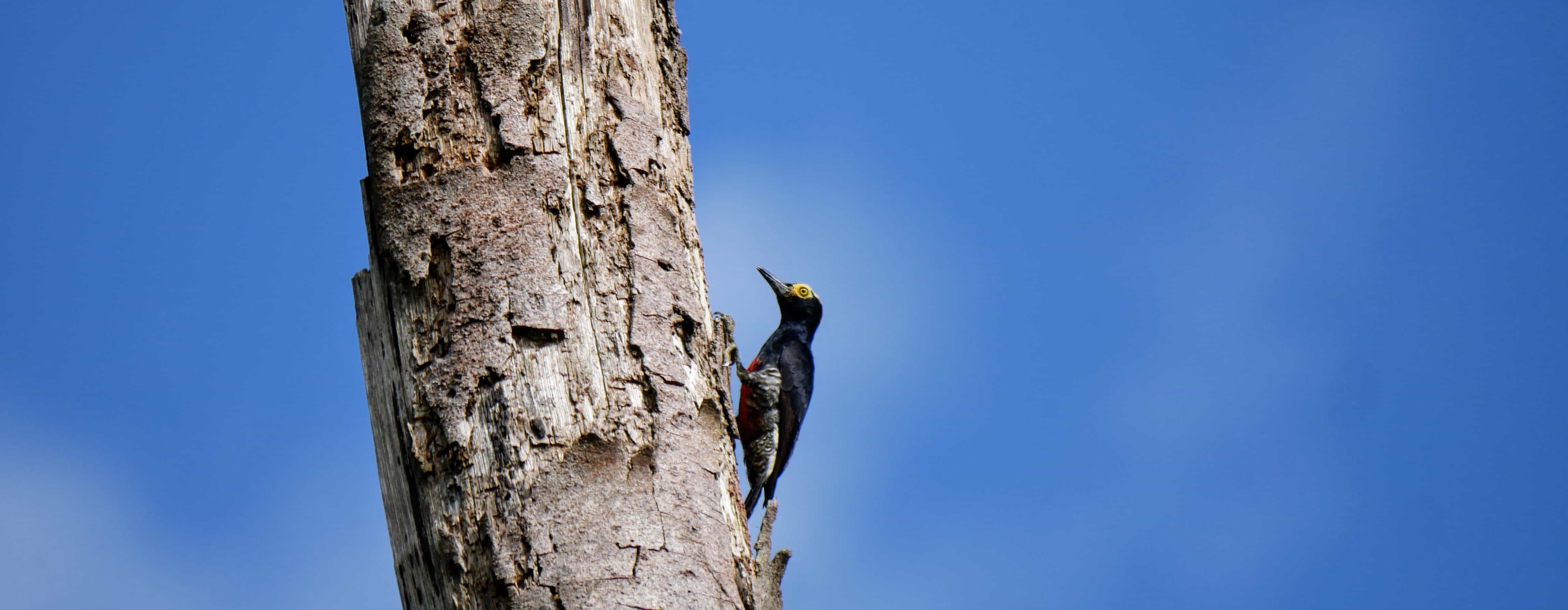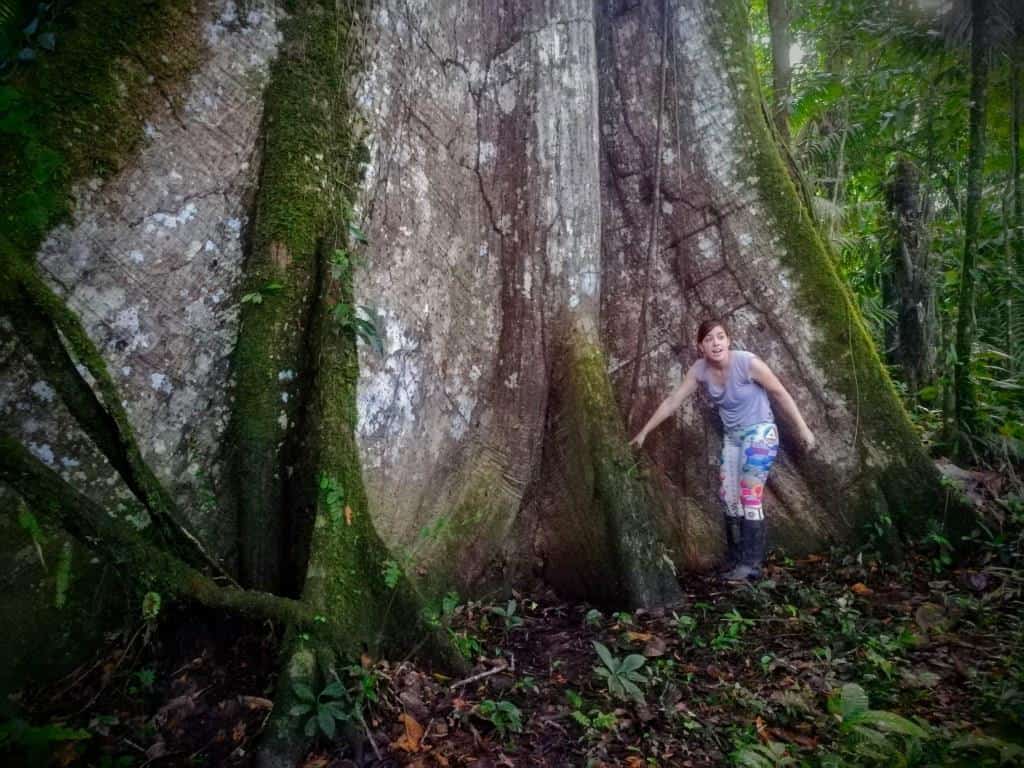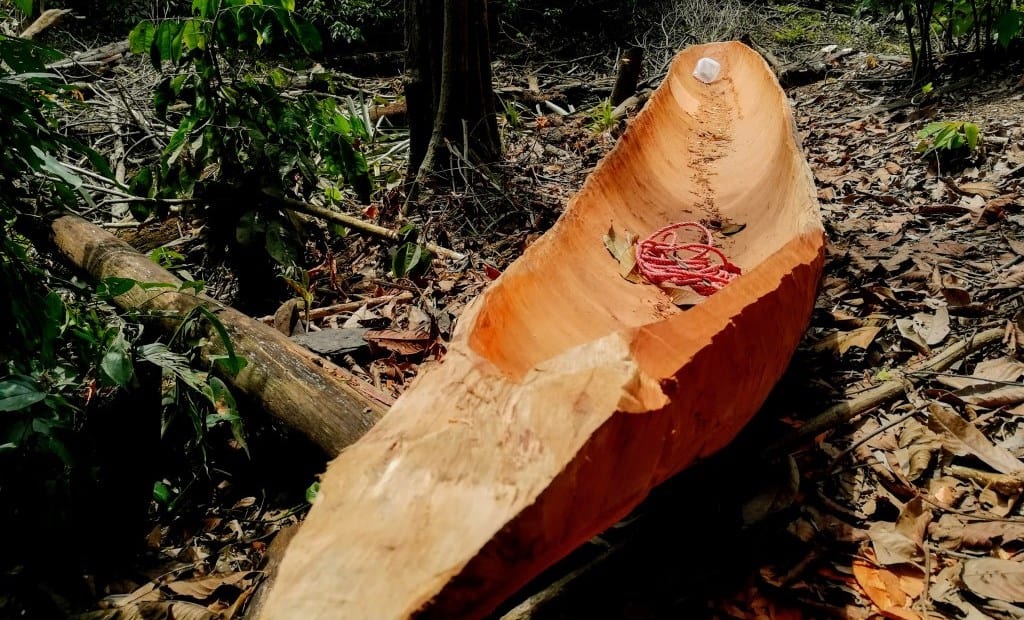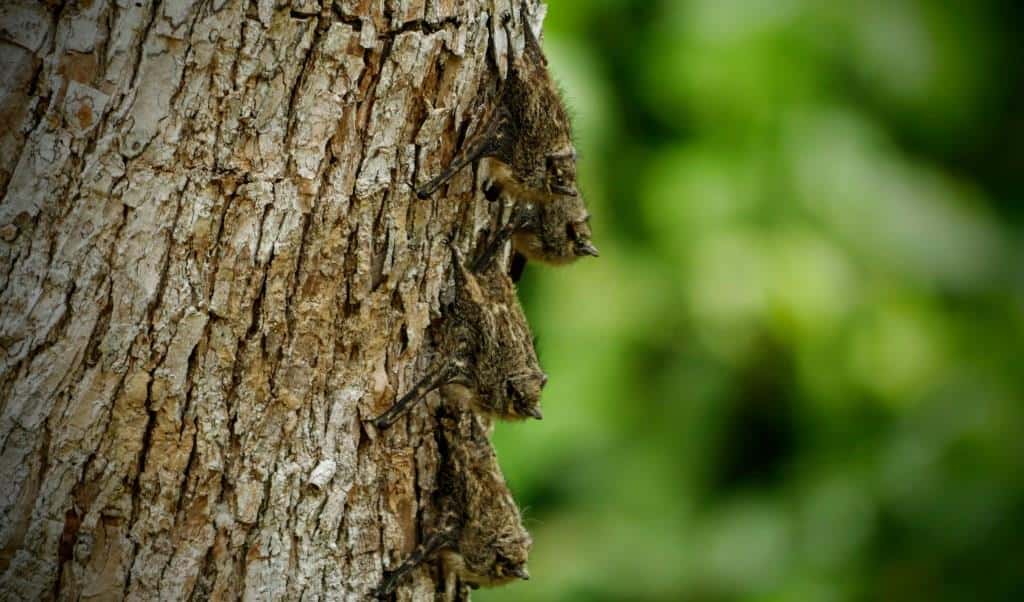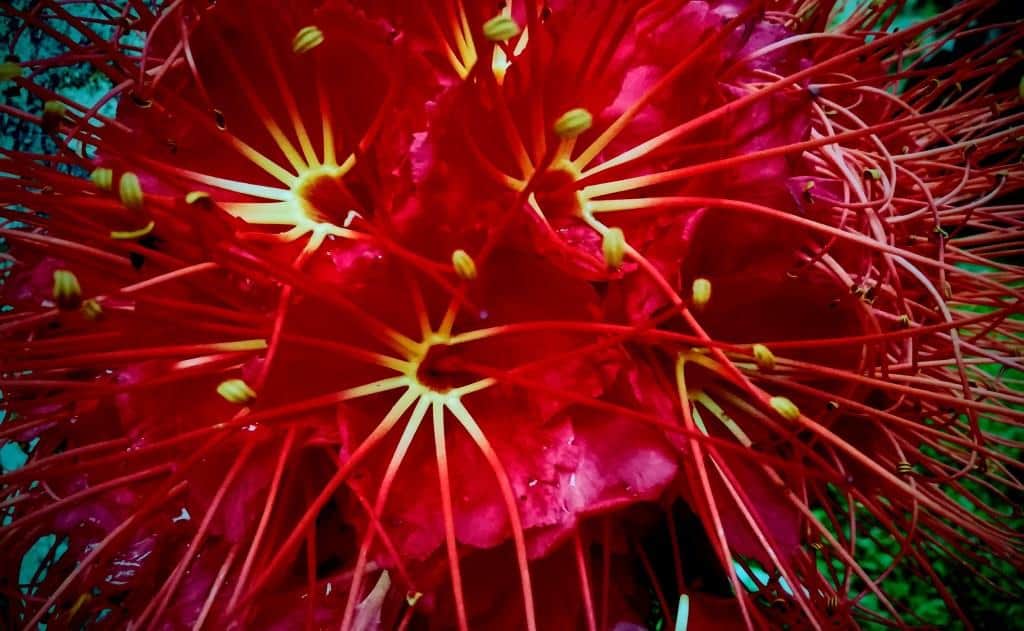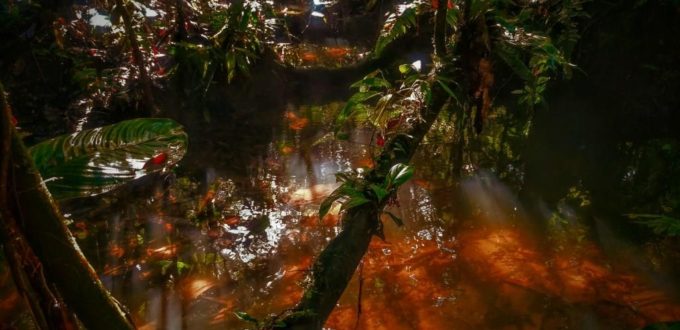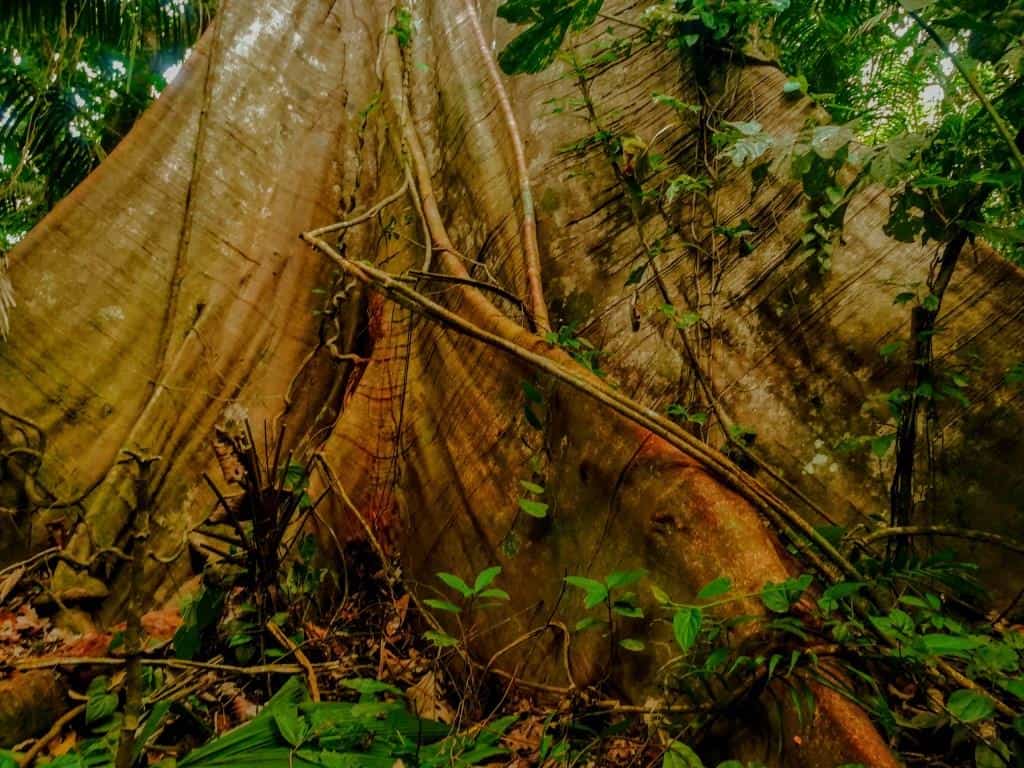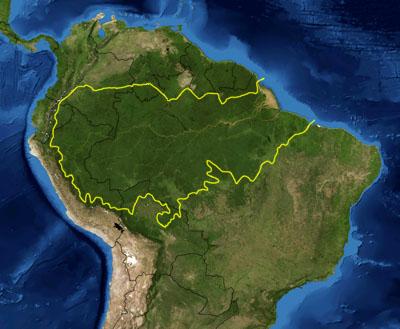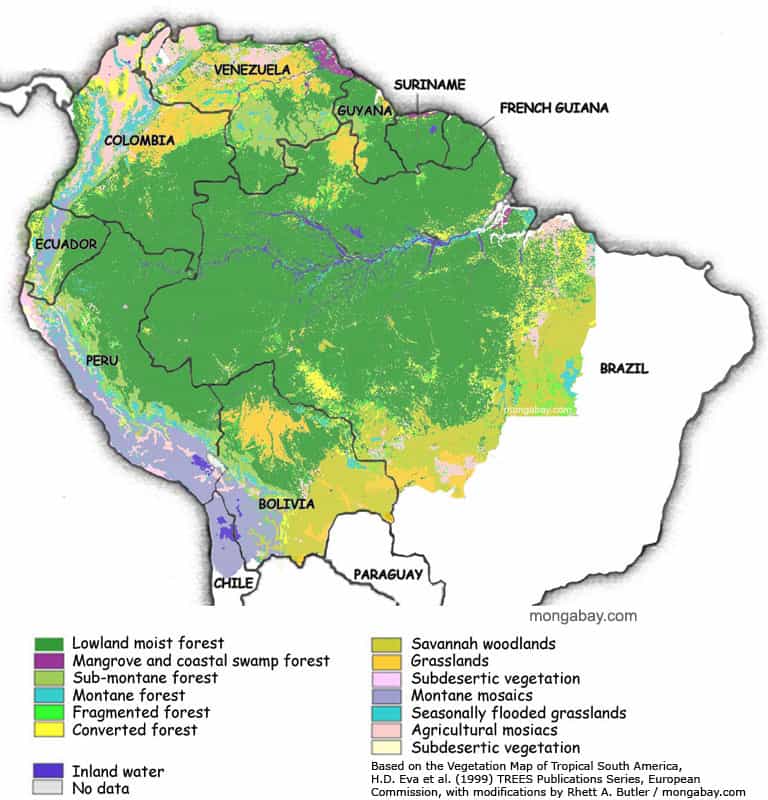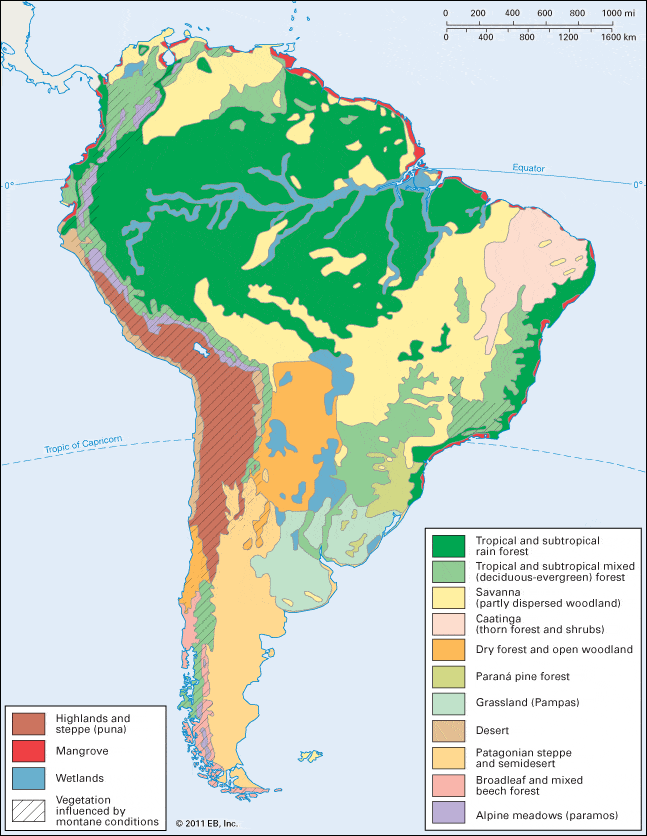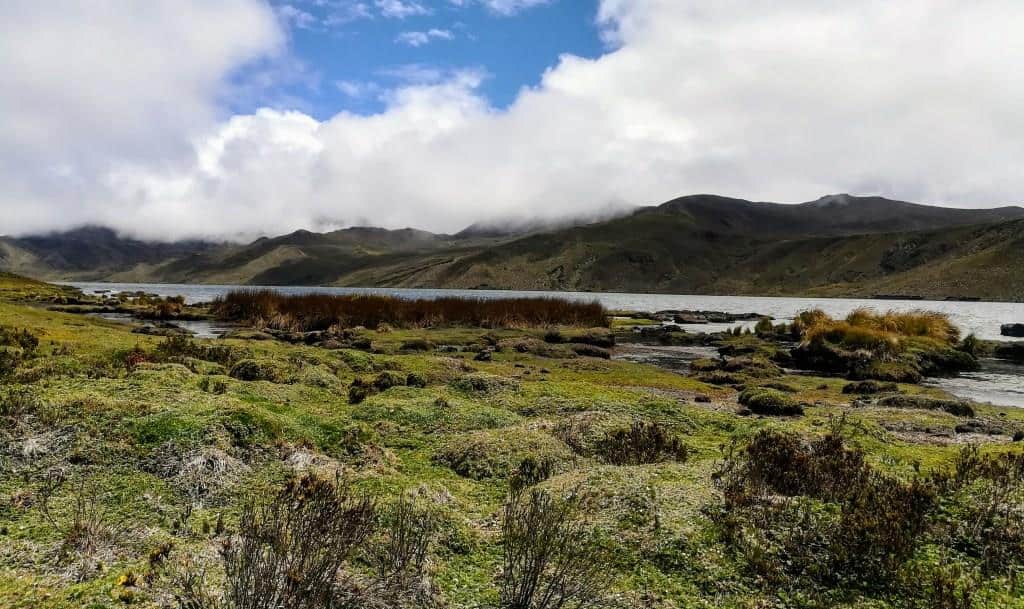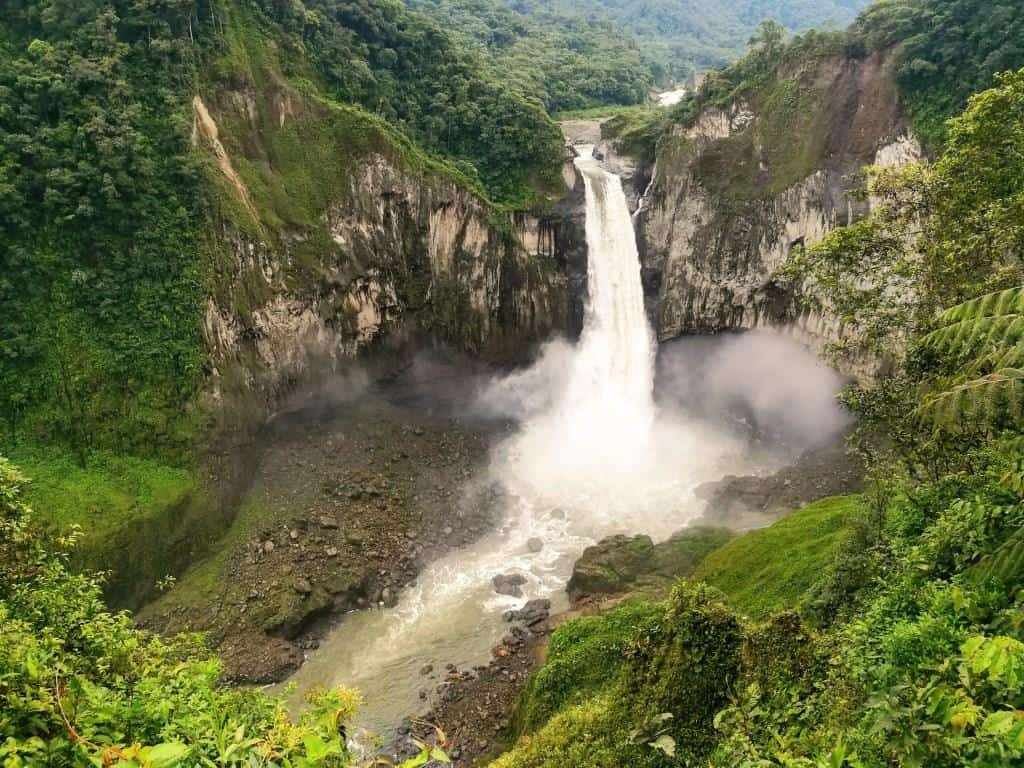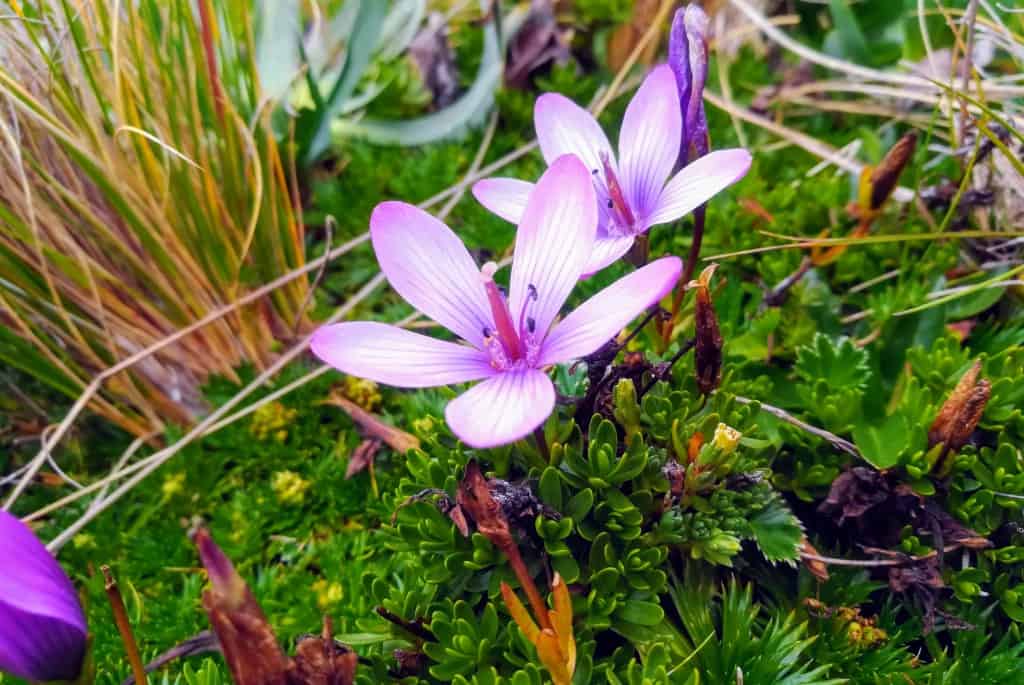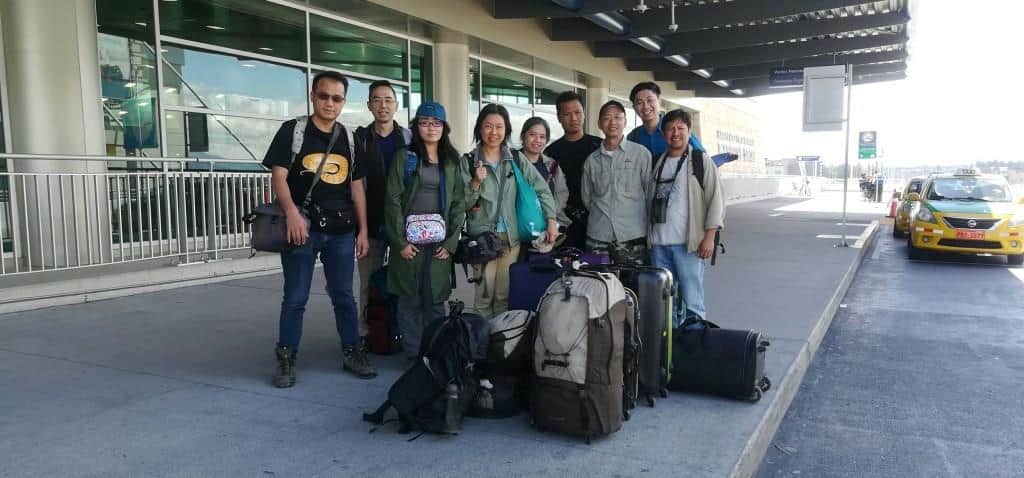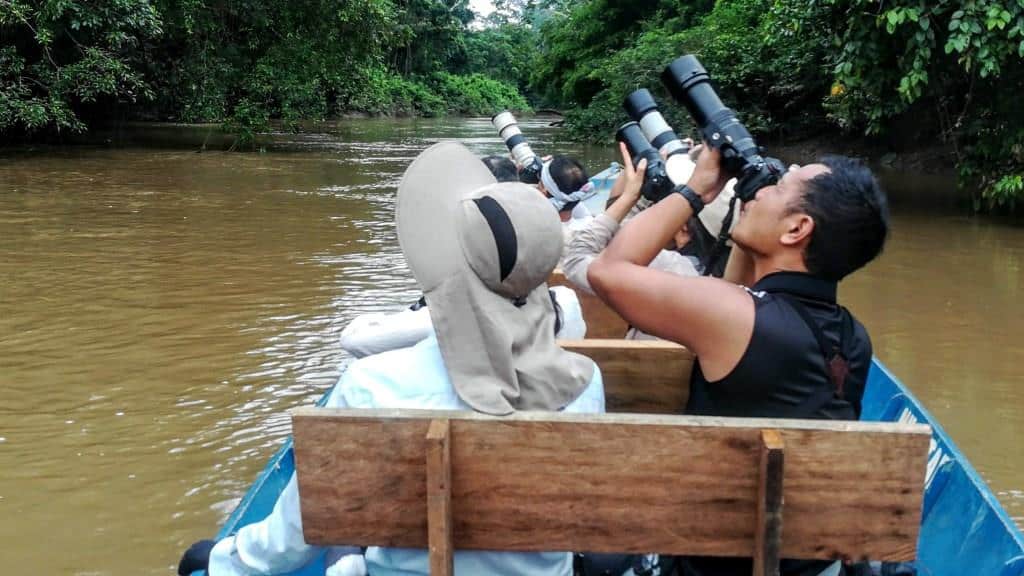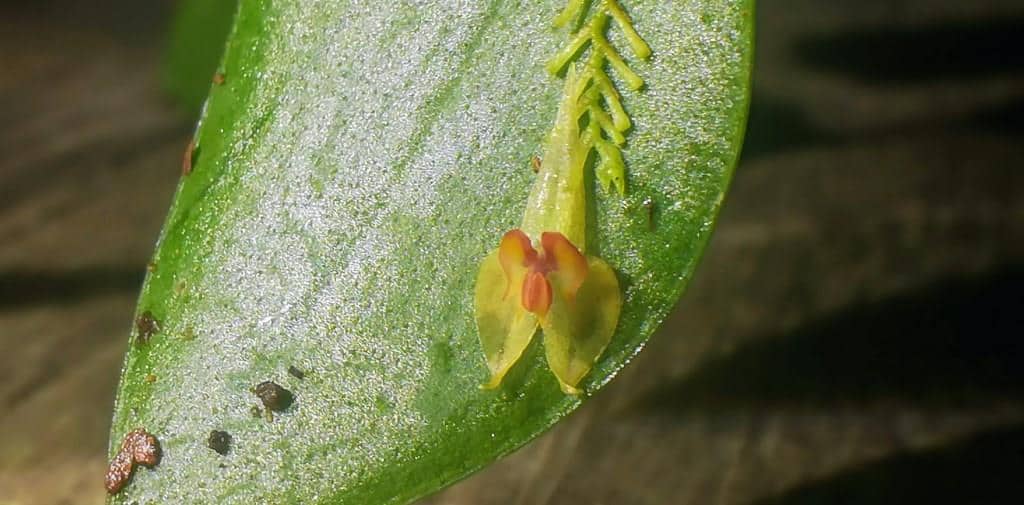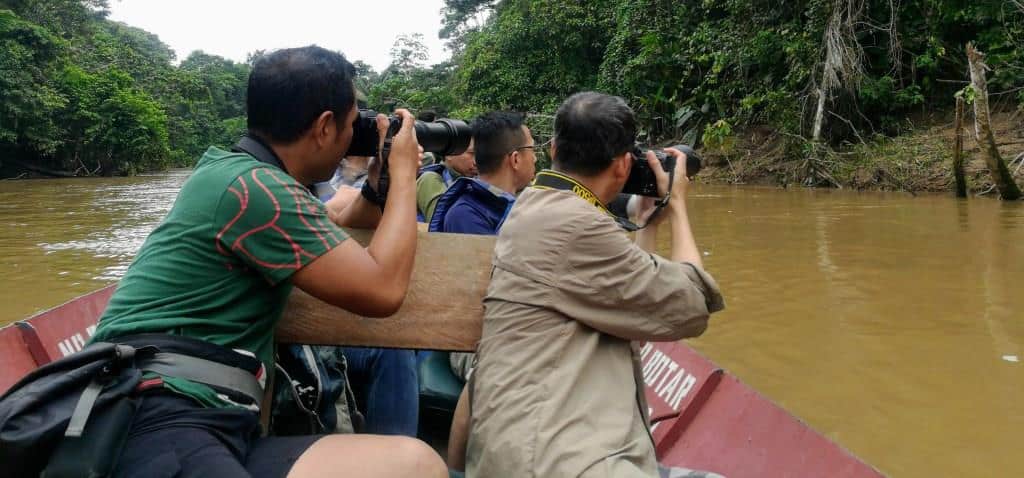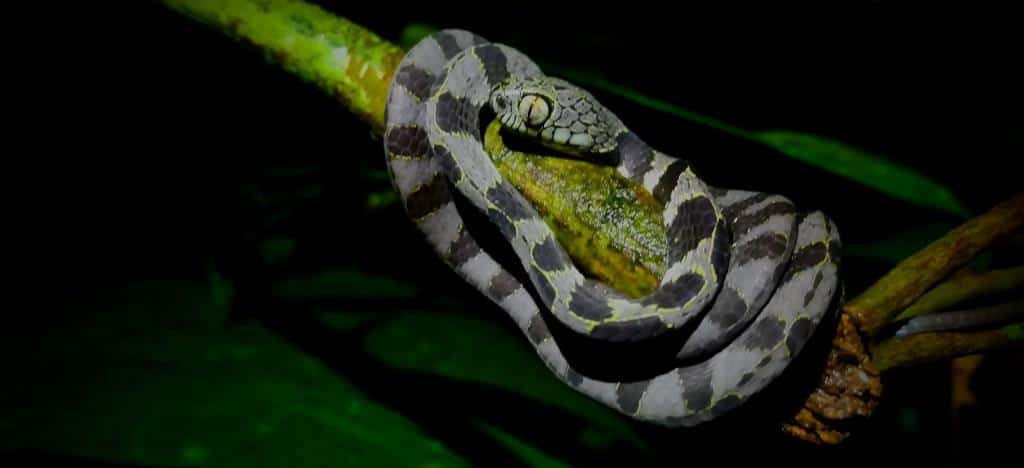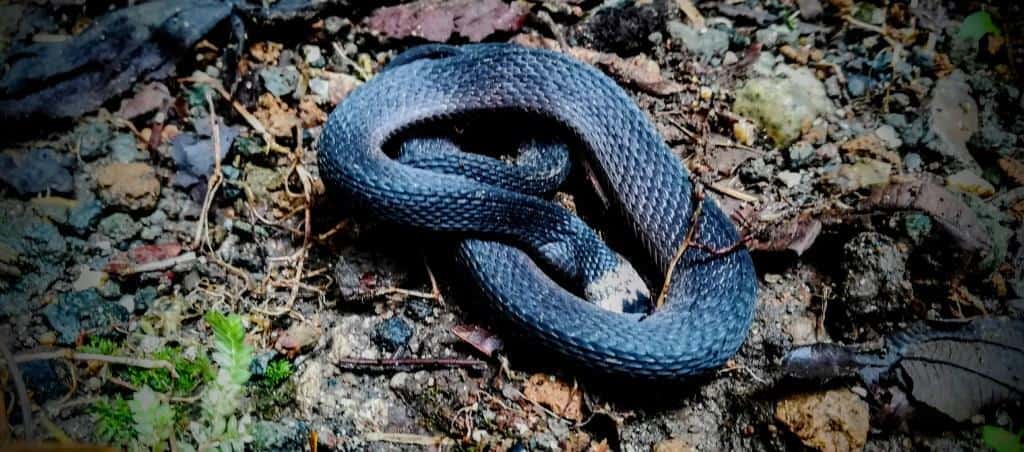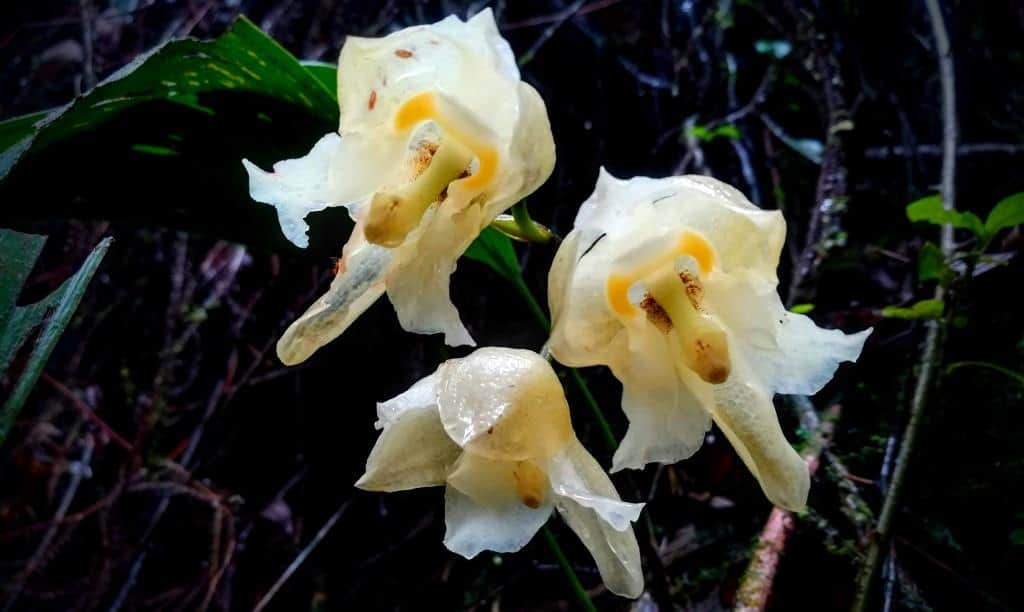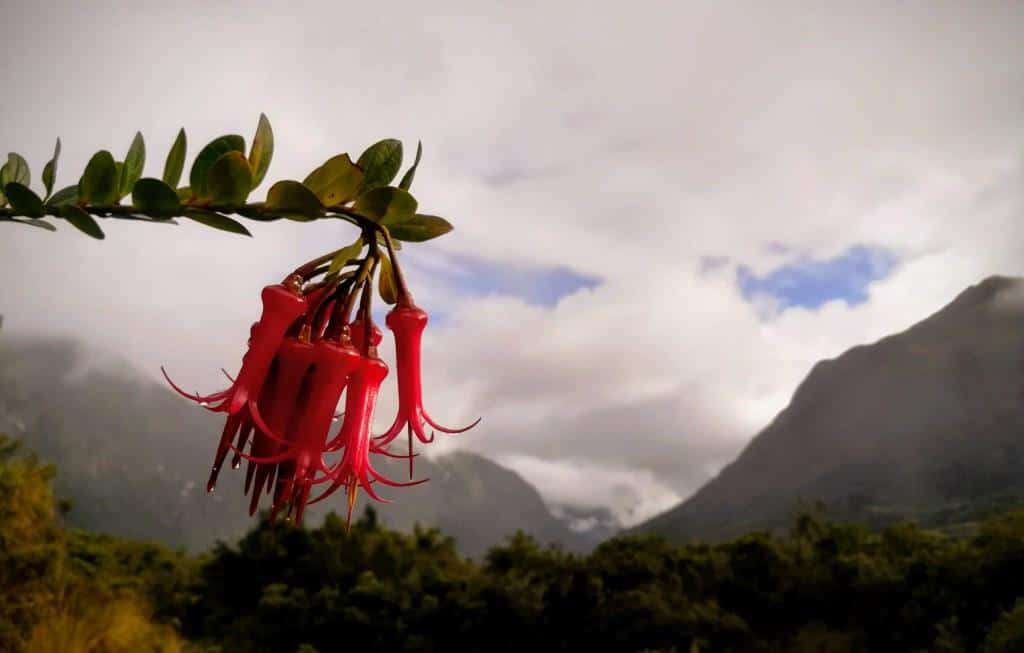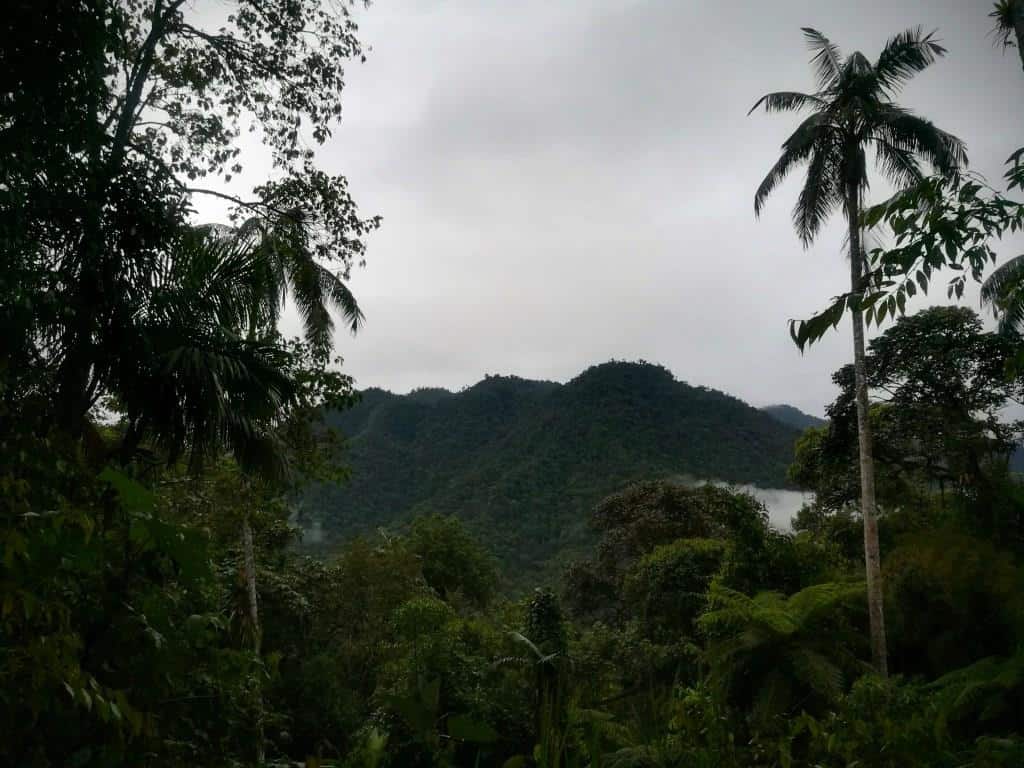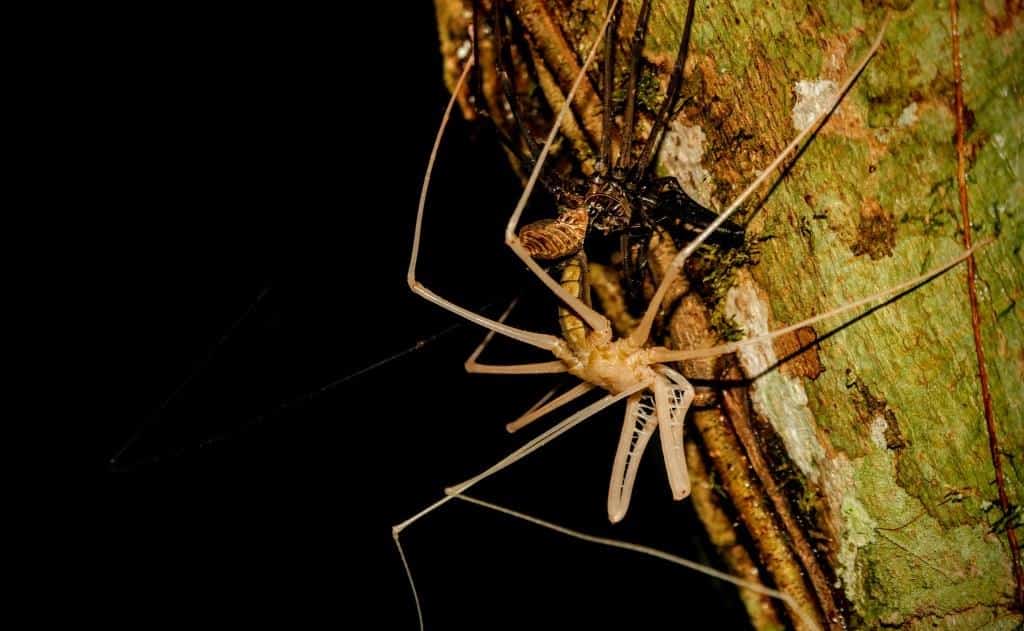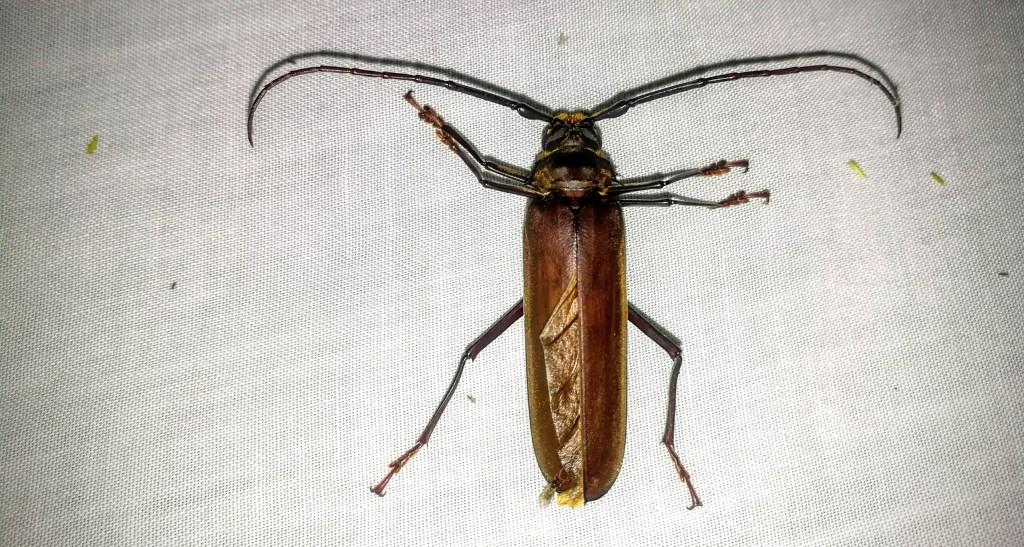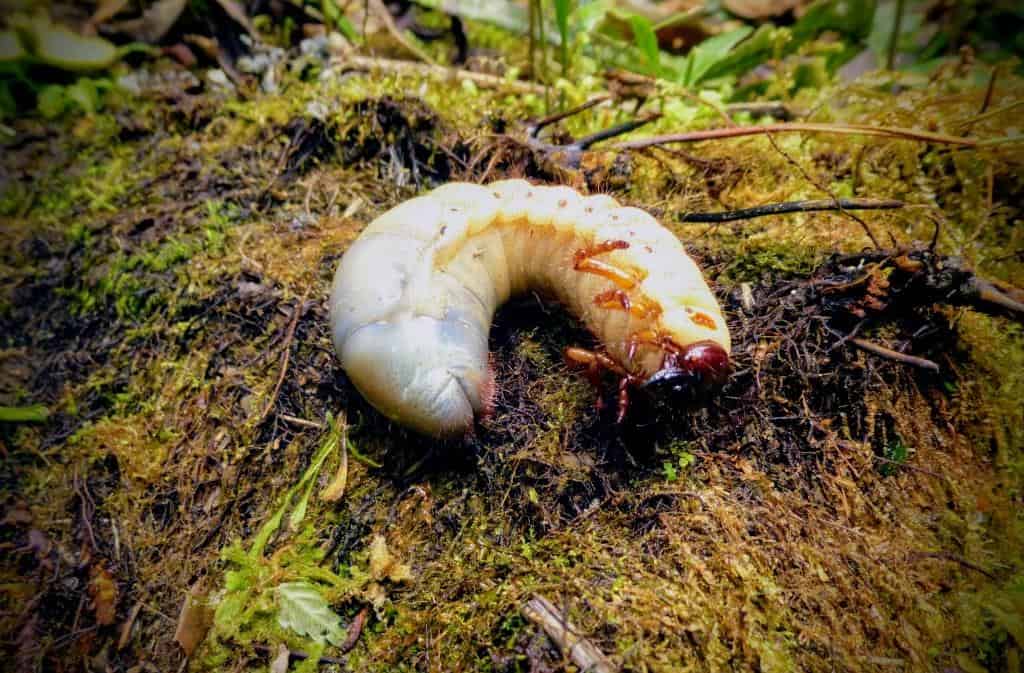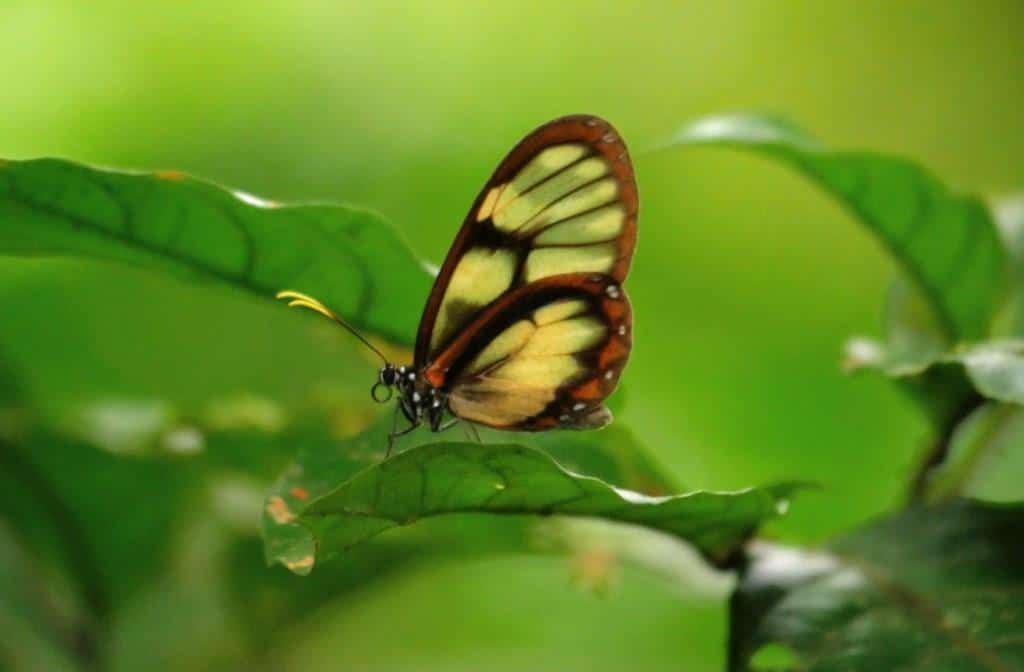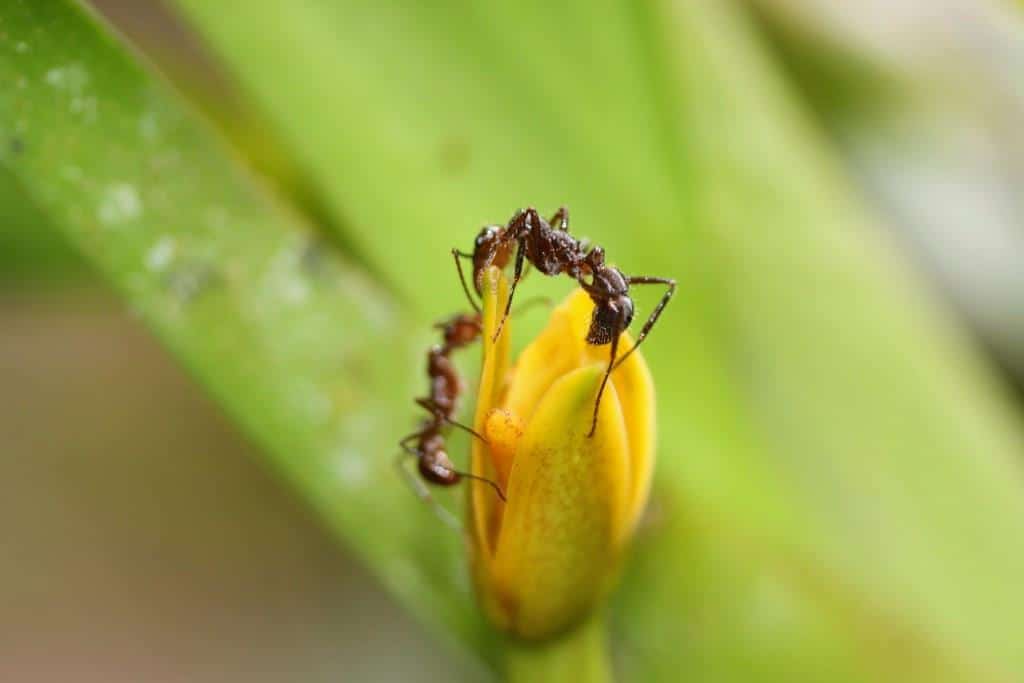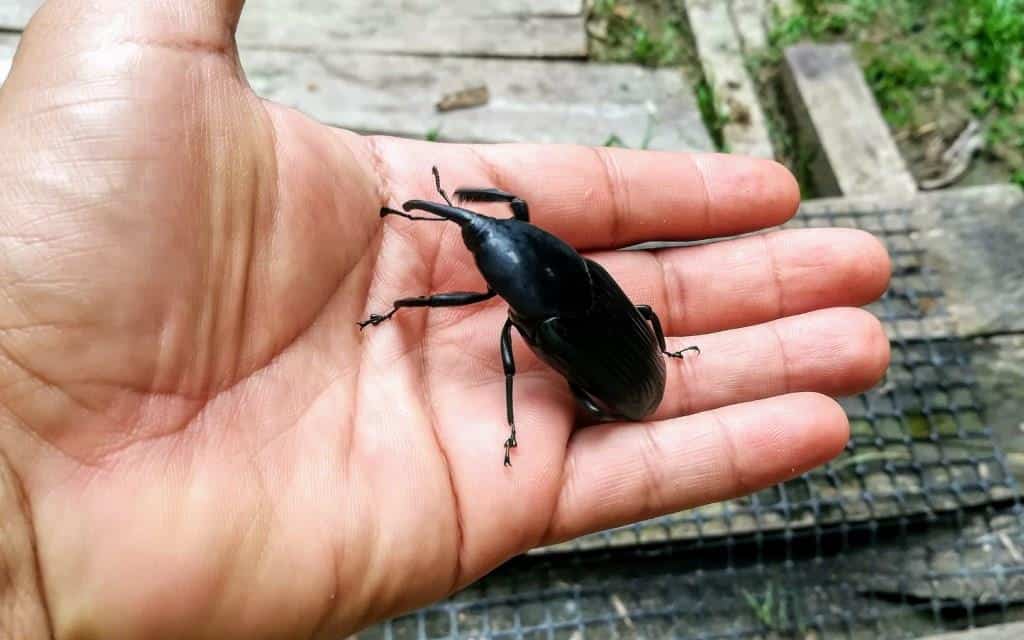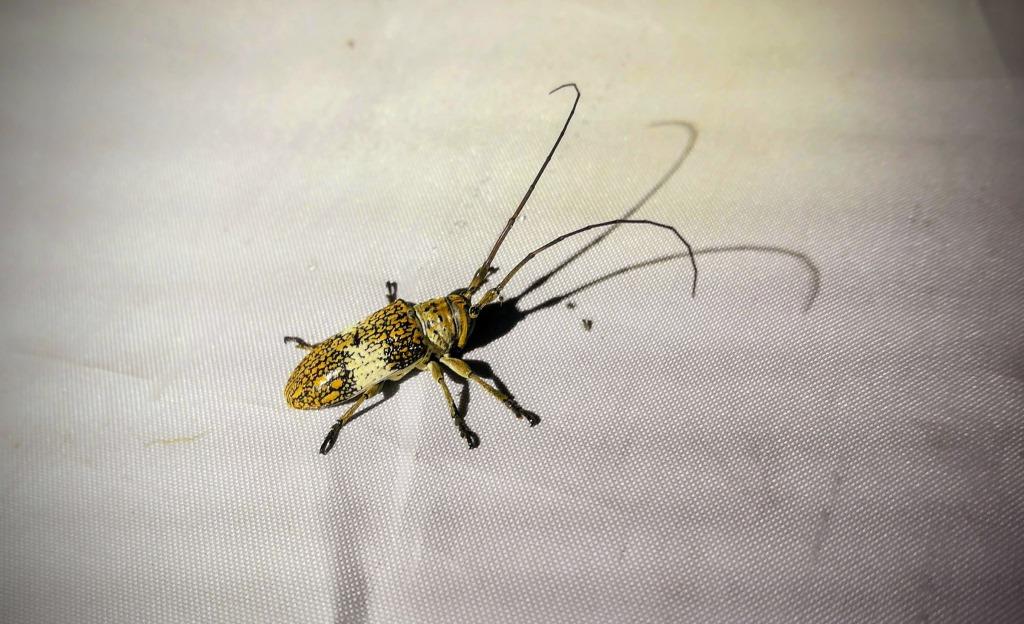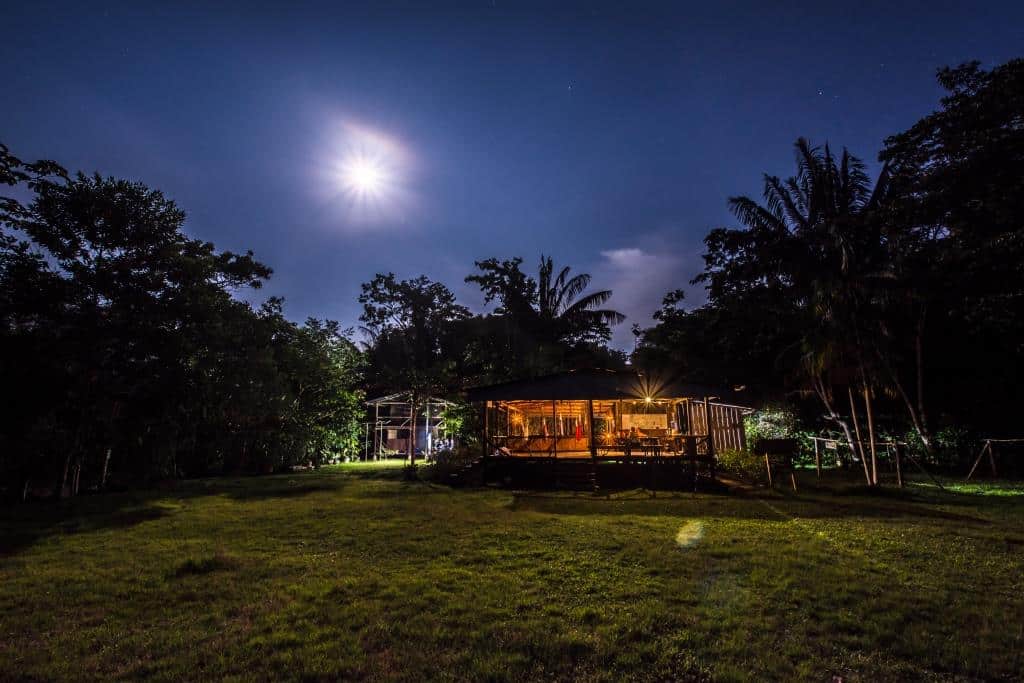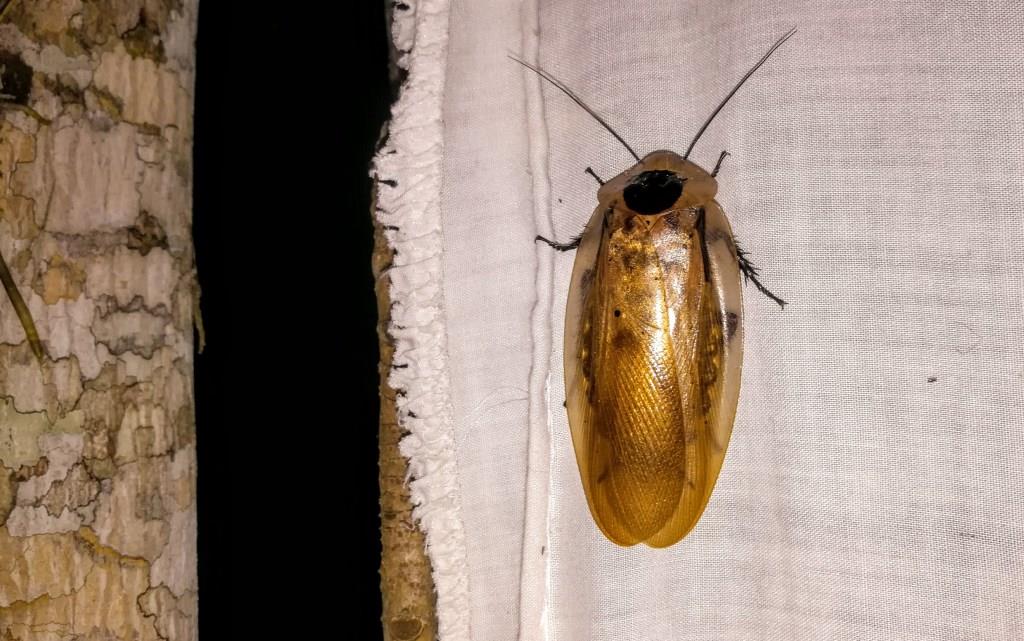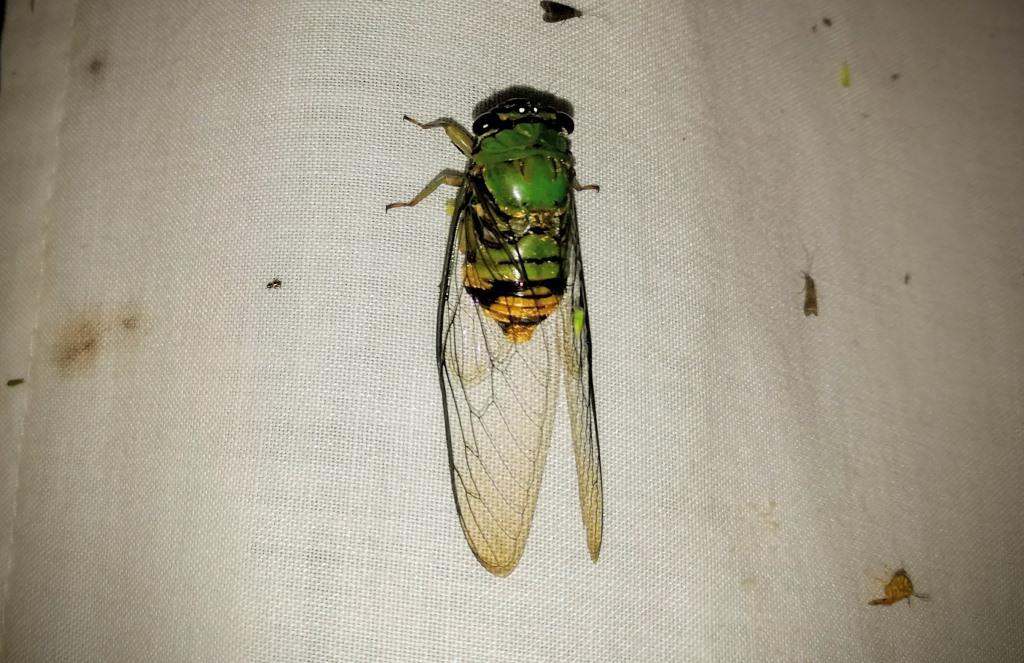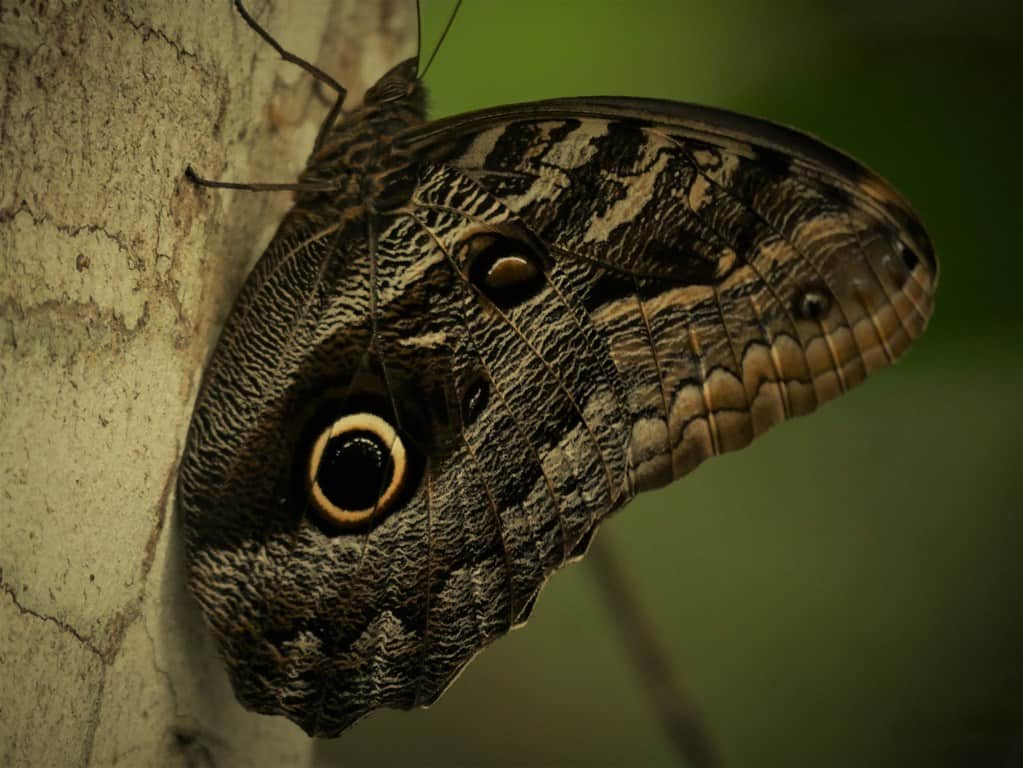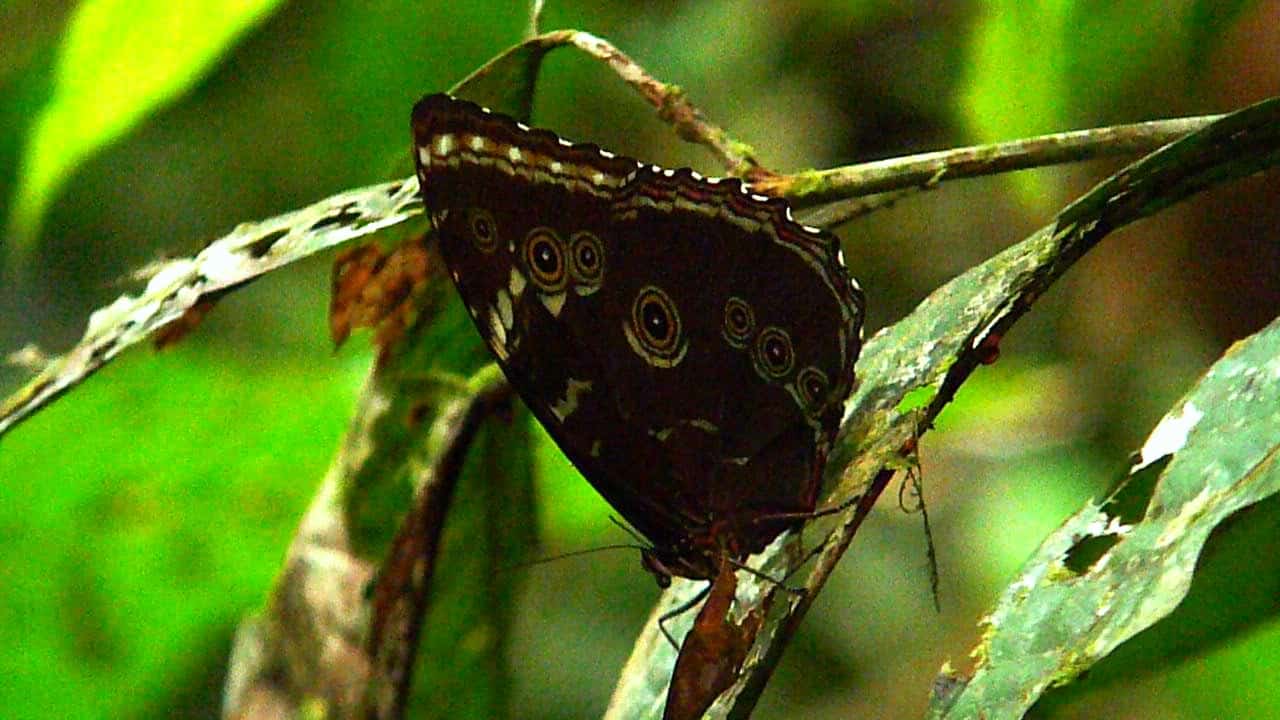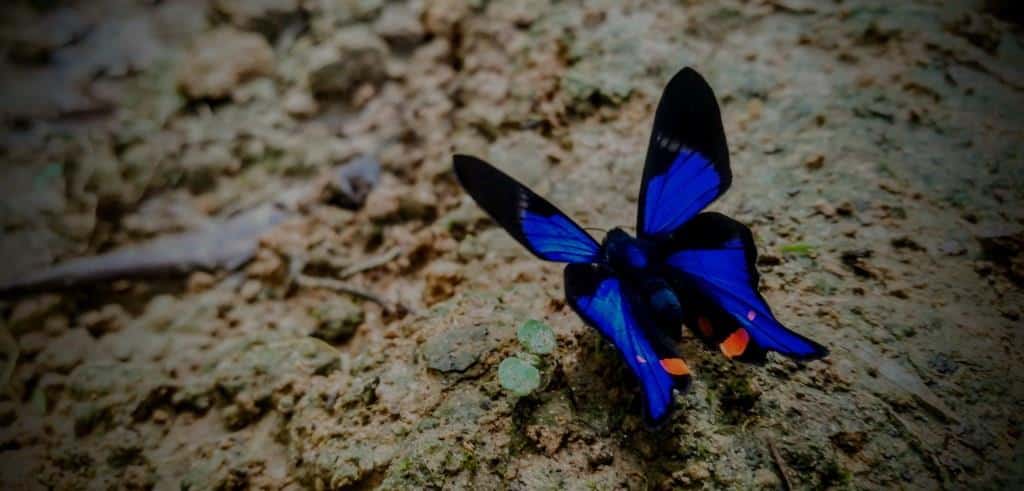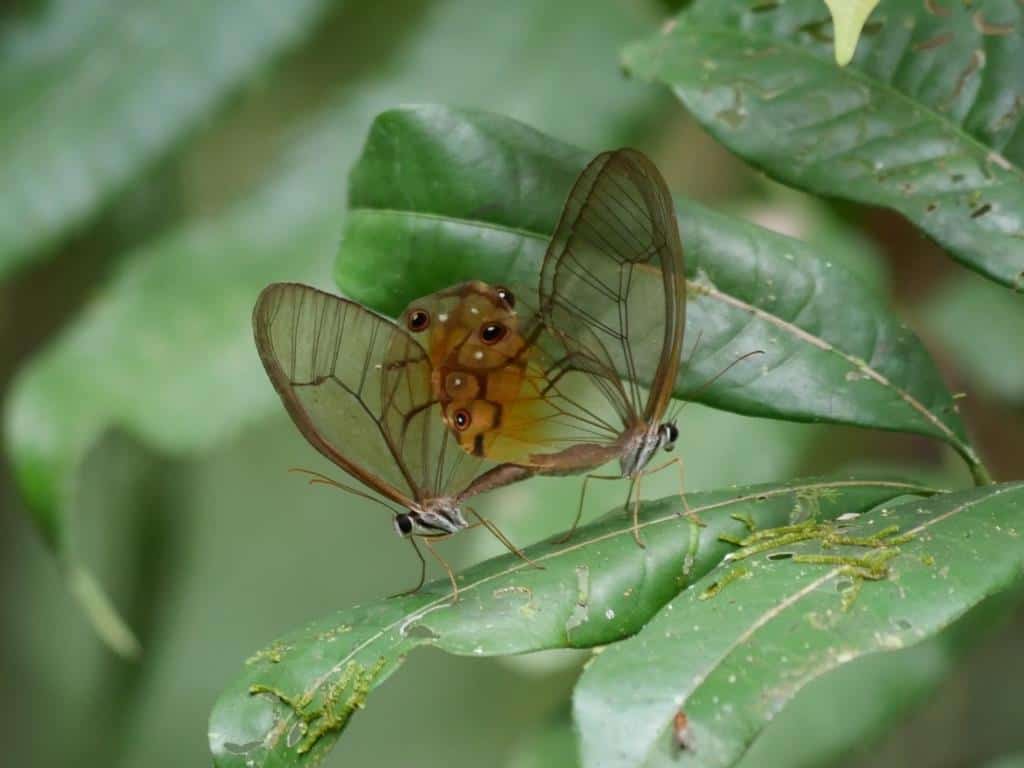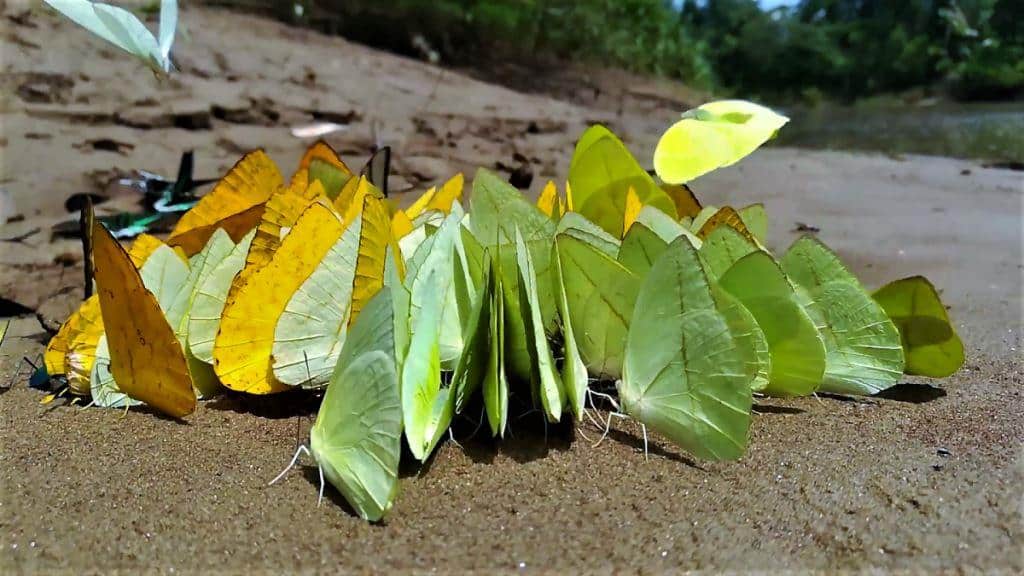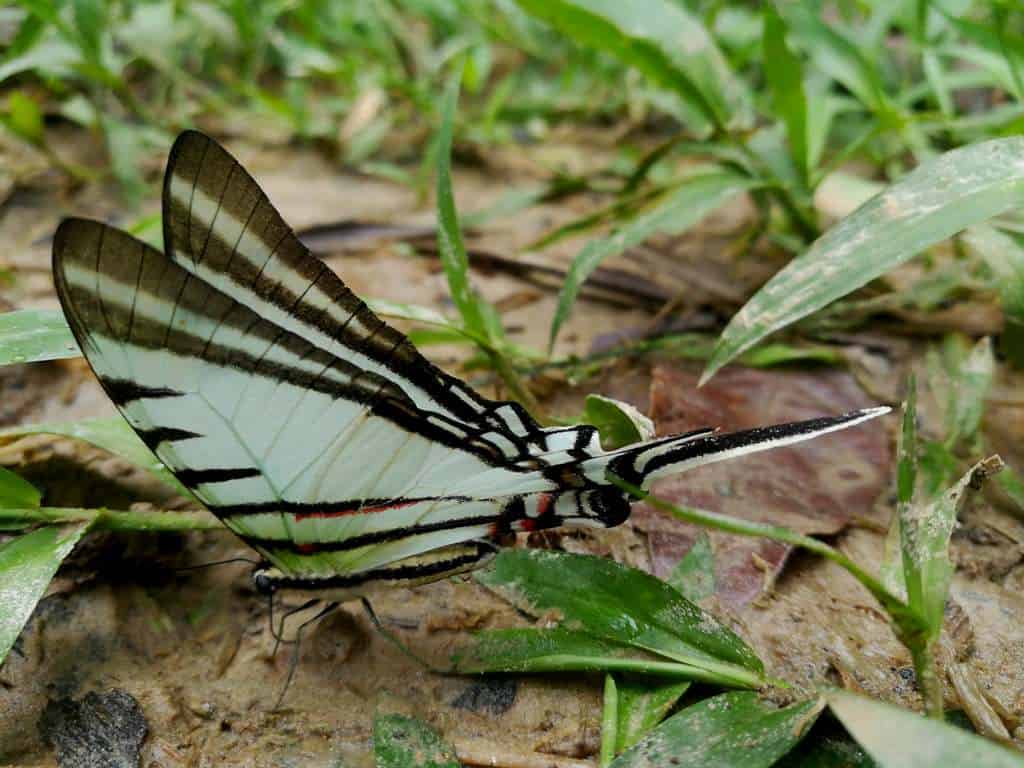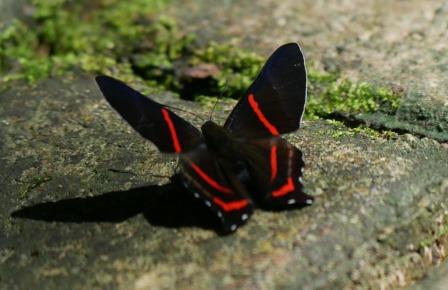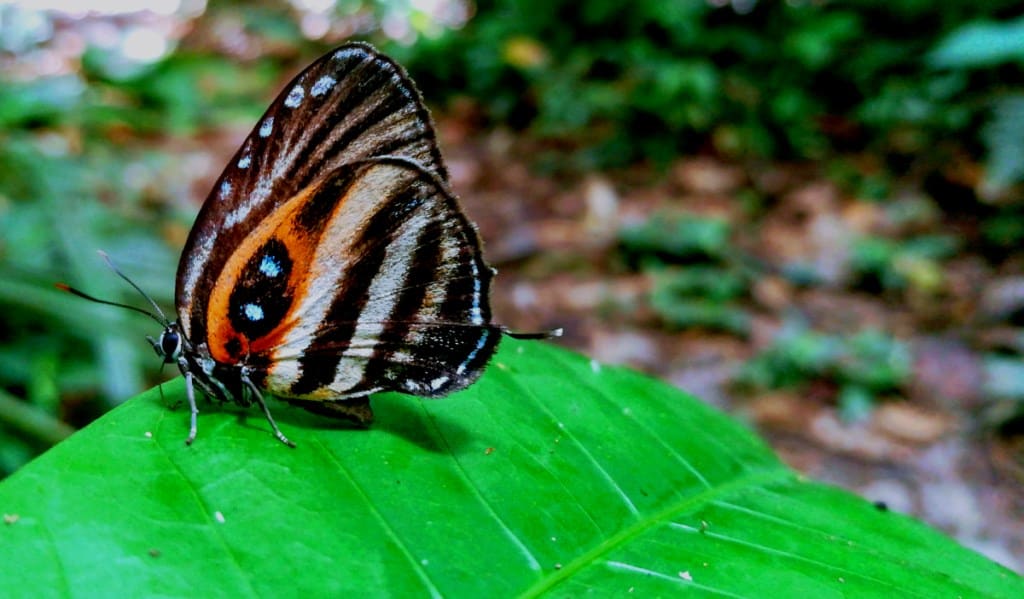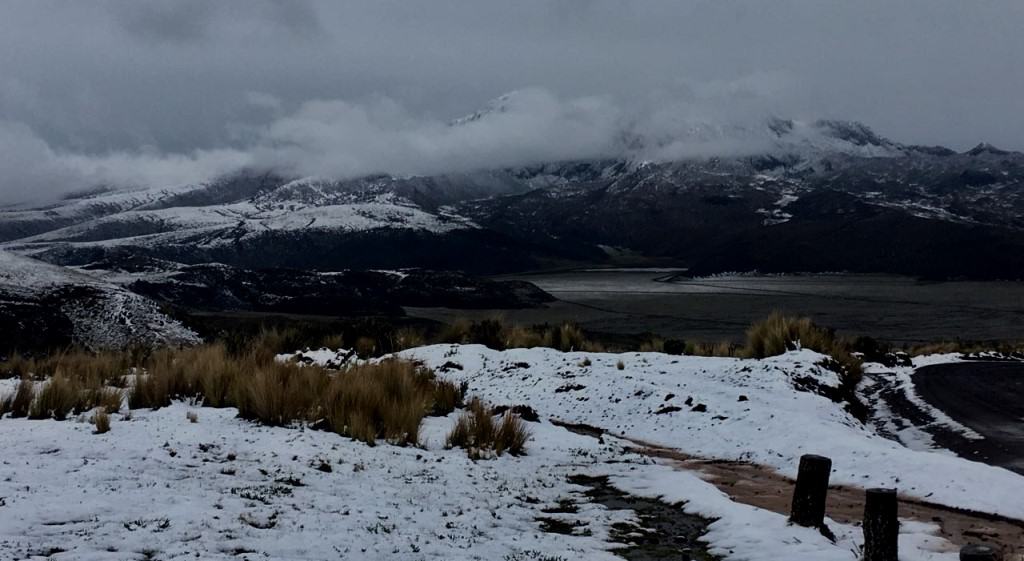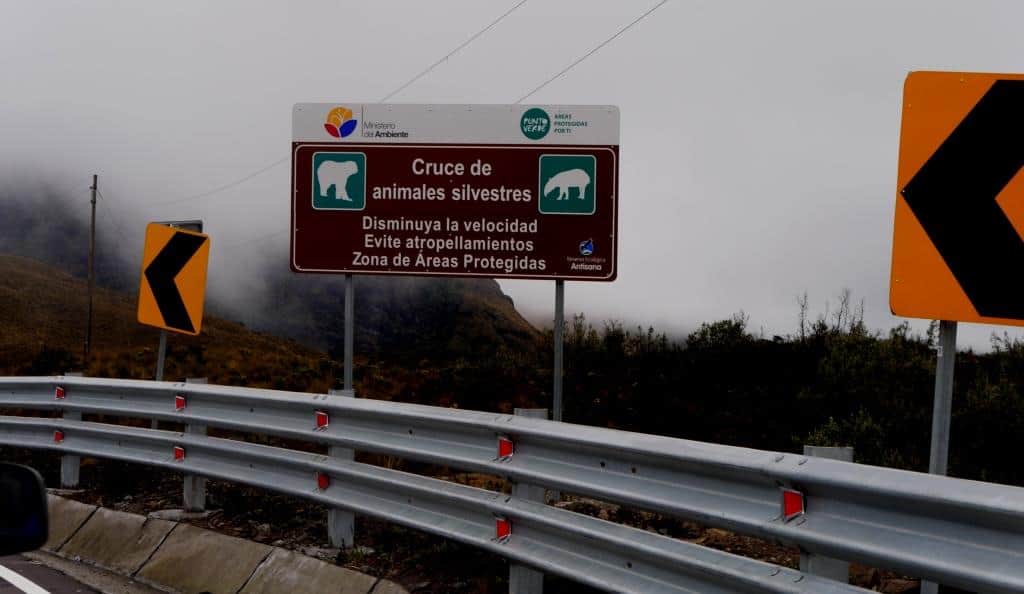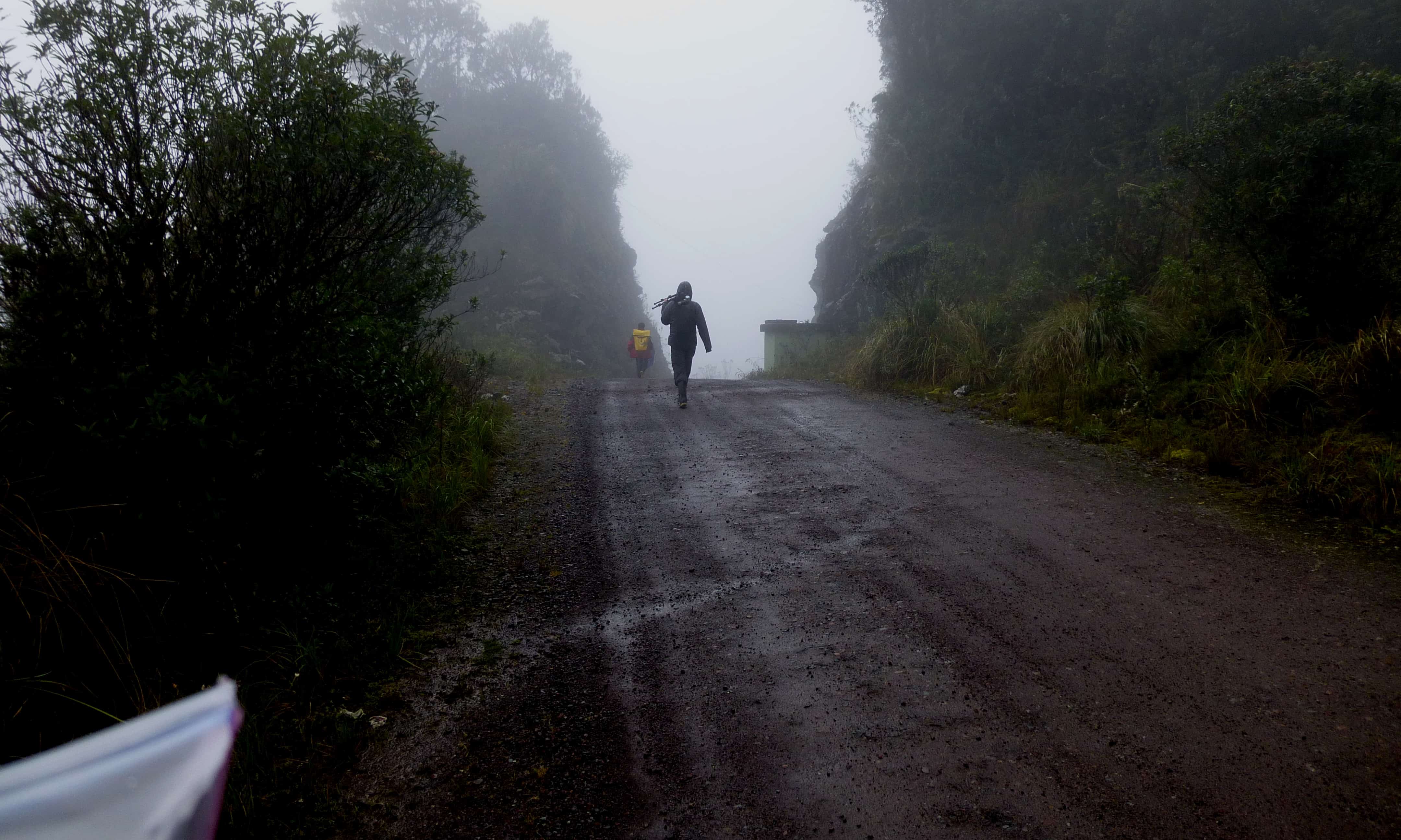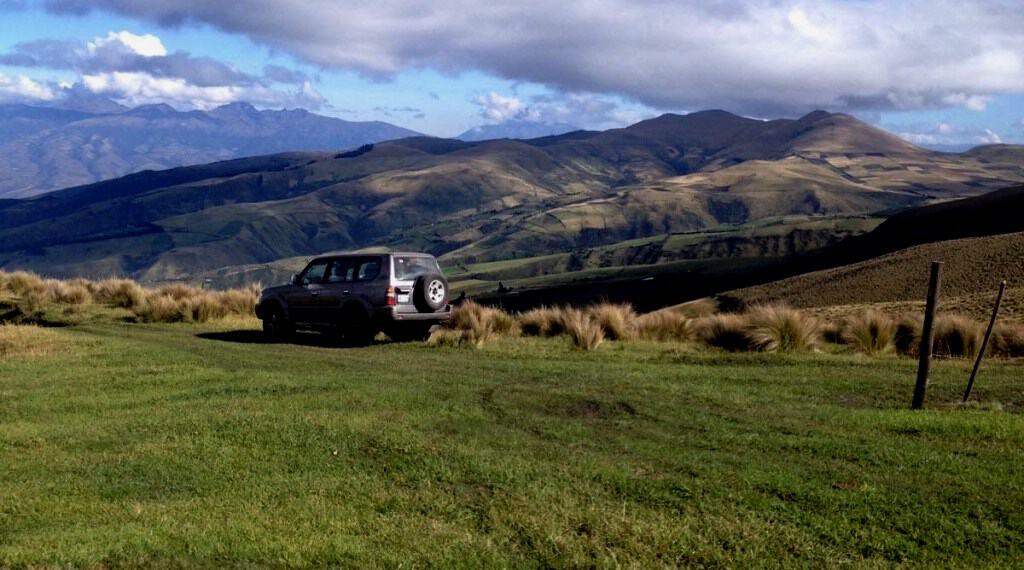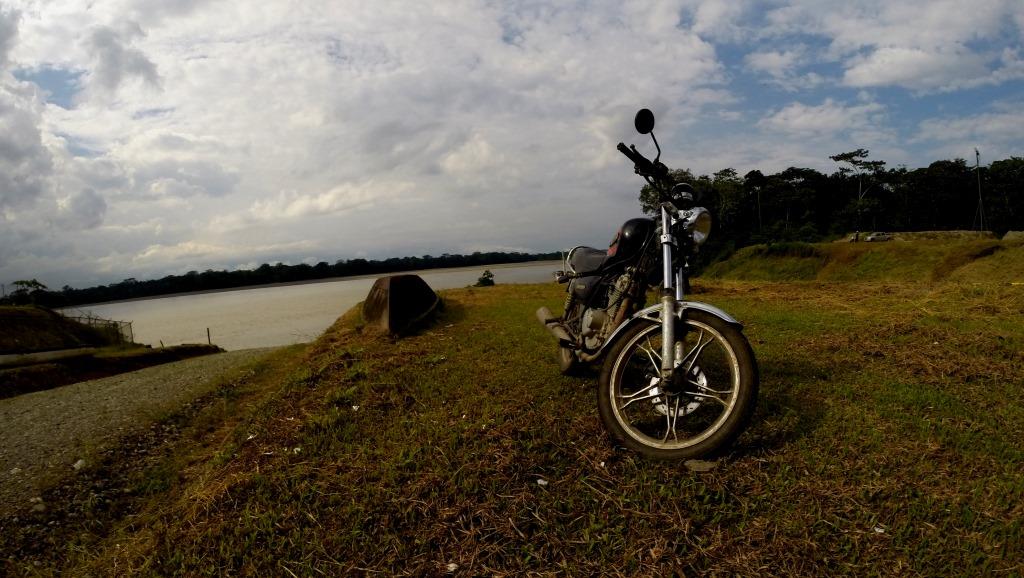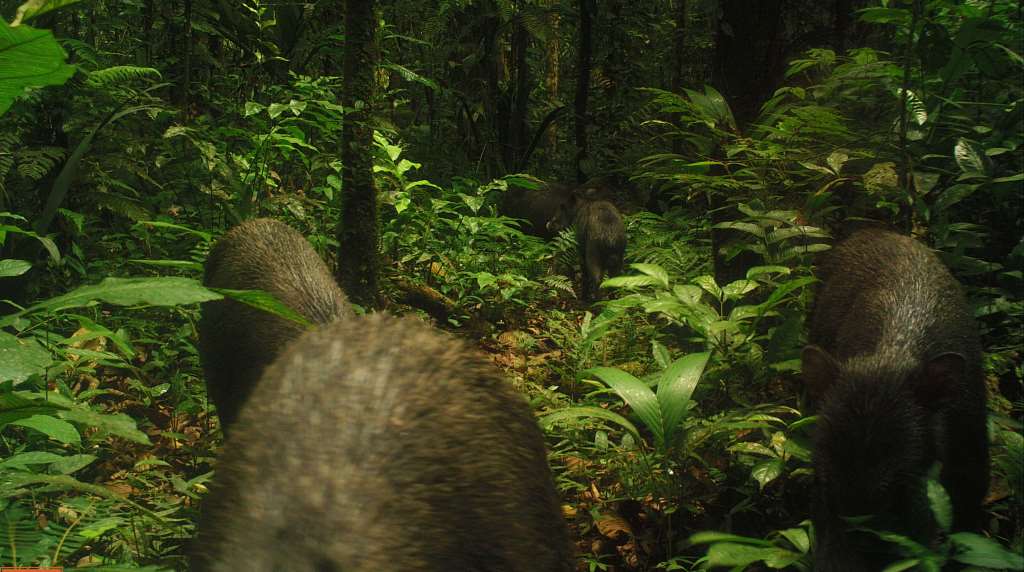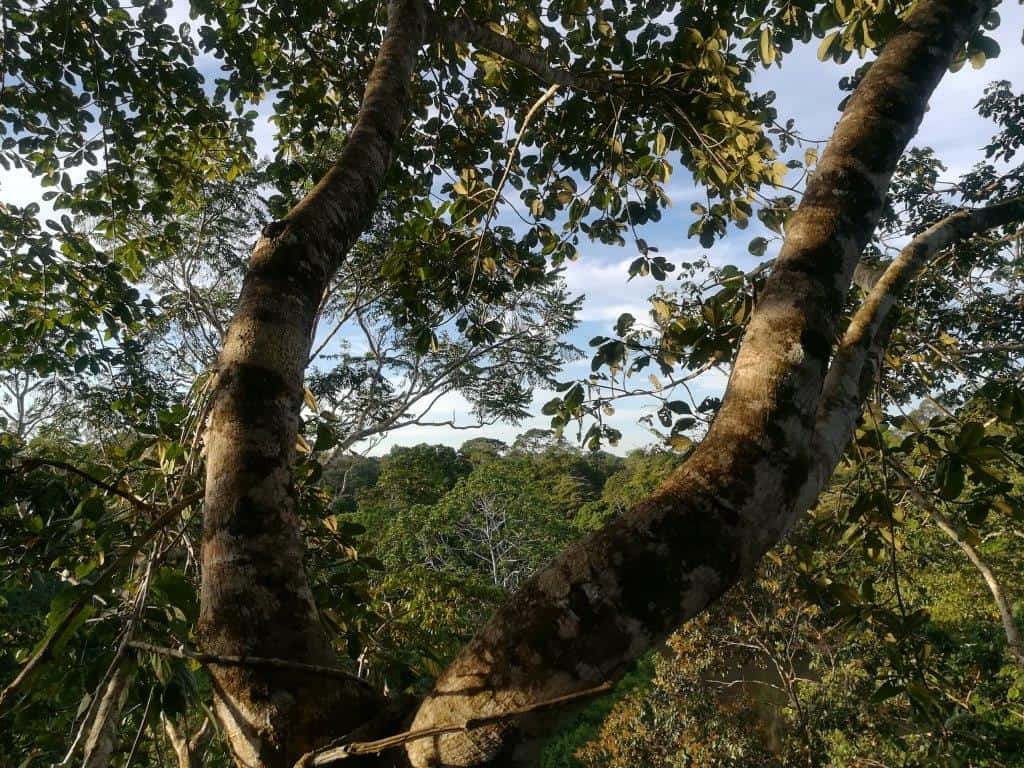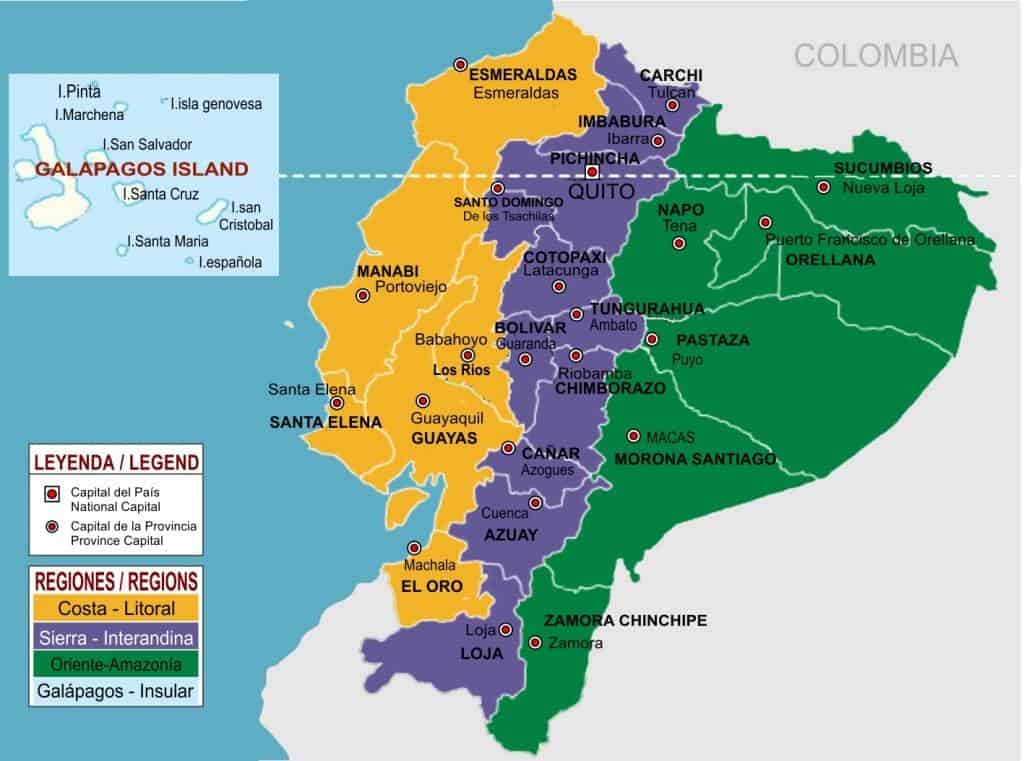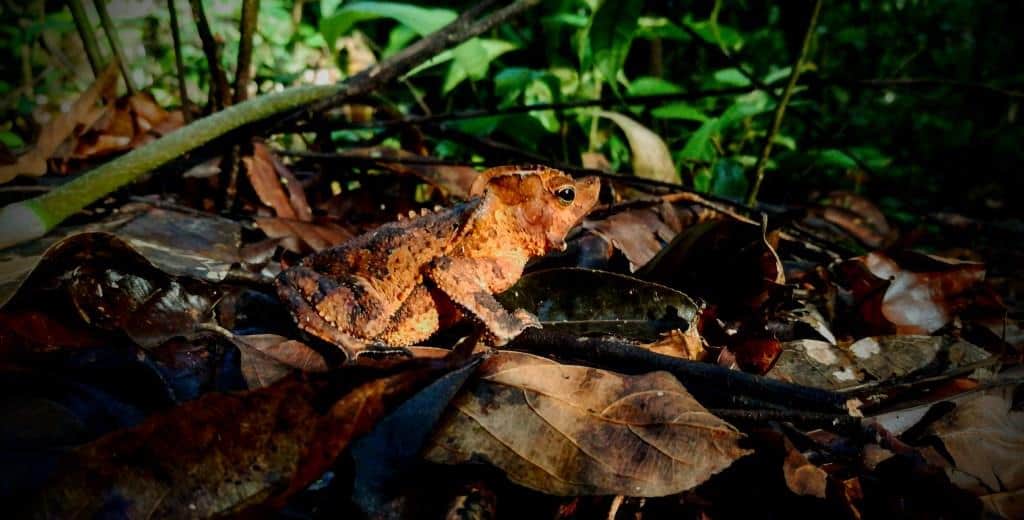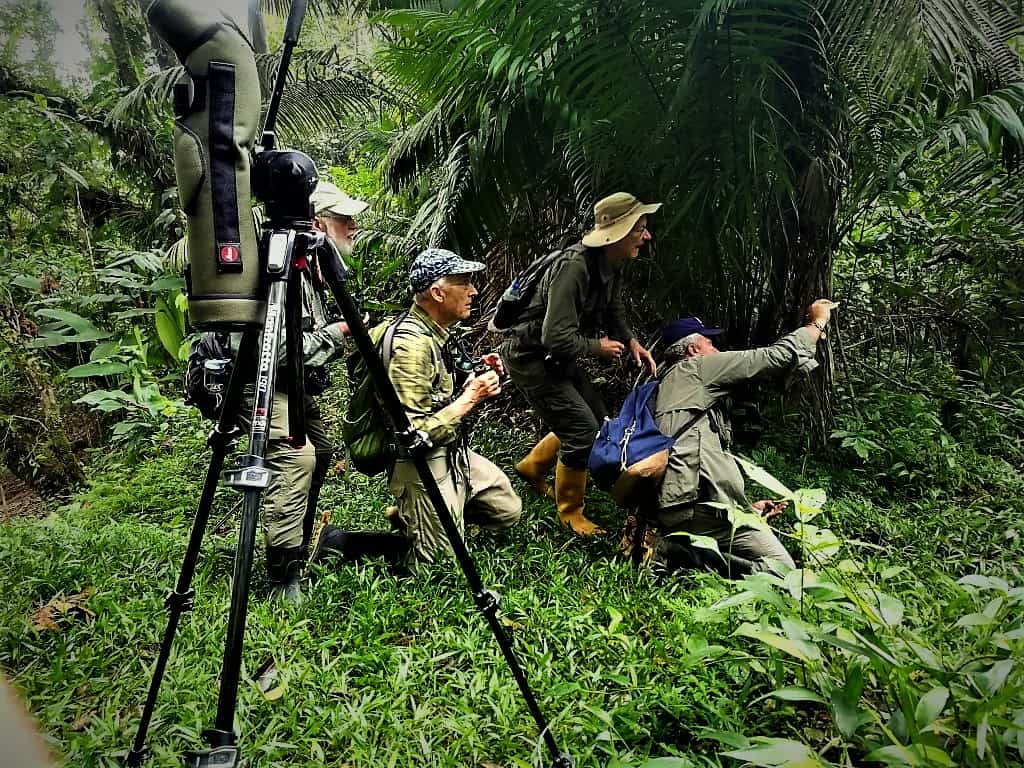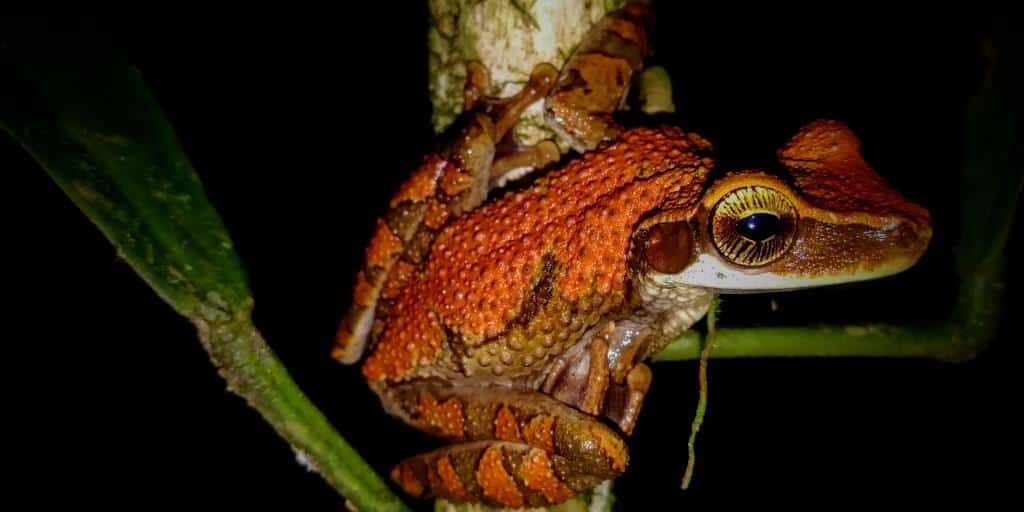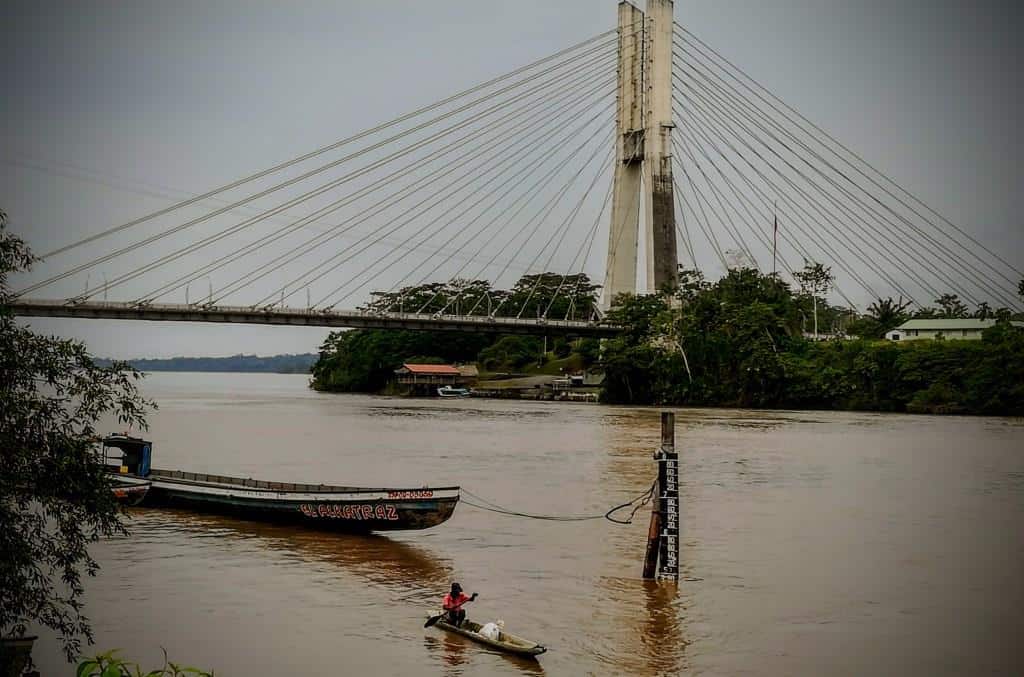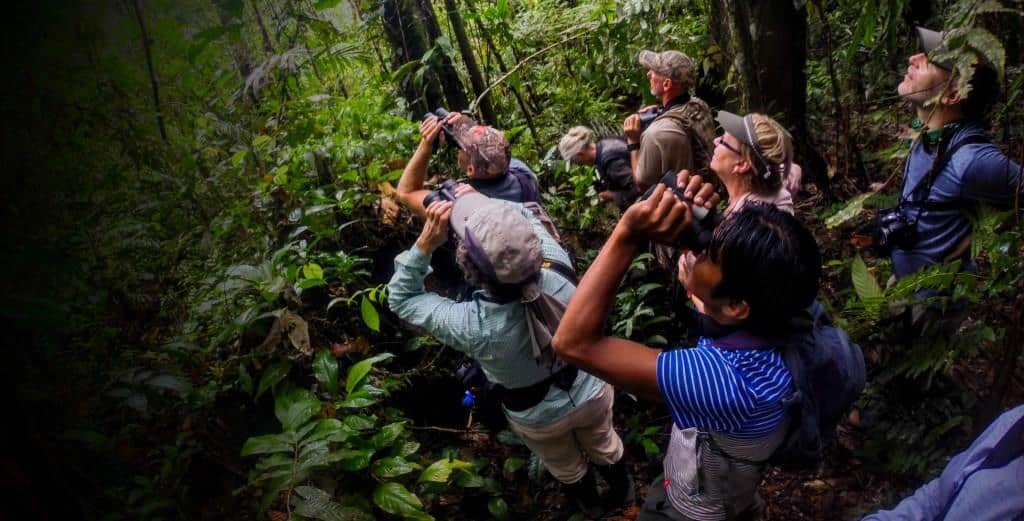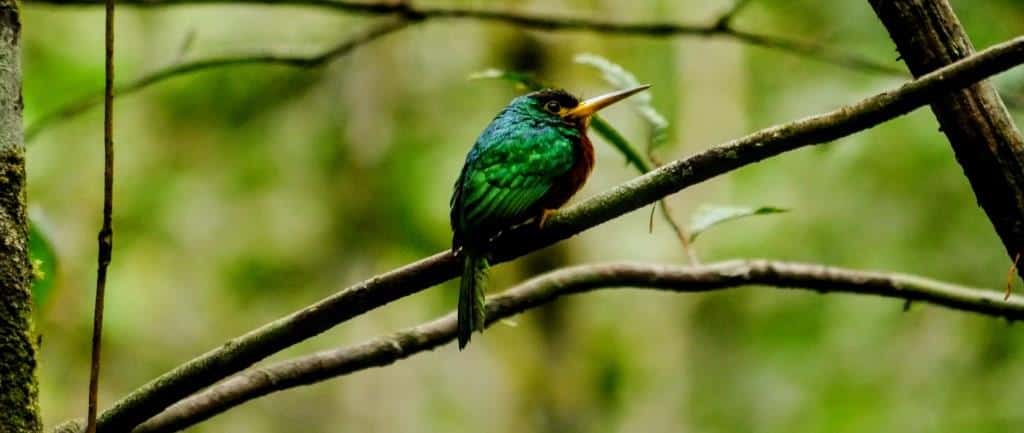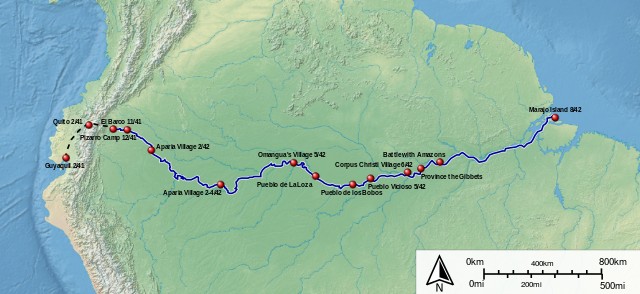Learn about the Animals of the Amazon Rainforest in Ecuador.
We present to you some of the most Popular Animals living in the largest tropical rainforest in the world. Many of them you can also find them in other countries in South America.
Get familiar with their life history, sounds, and many videos of the animals can find during our Amazon Nature Trips.
What types of animals live in a tropical rainforest?
Rainforests are tremendously rich in animal life. Rainforests are populated with insects (like butterflies and beetles), arachnids (like spiders and ticks), worms, reptiles (like snakes and lizards), amphibians (like frogs and toads), birds (like parrots and toucans), and mammals (like sloths and jaguars).
Where do animals live in the rainforest?
All Life lives in different strata of the rainforest. For example, birds and tree frogs live in the upper leaves of the trees (canopy) and in the emergent trees, other creatures like howler monkeys and sloths also live in the canopy.
Large animals (like jaguars anteaters, tapirs, and deers) generally live on the forest floor also known as the understory, Insects are found almost everywhere.
Anacondas, dolphins in the water, electric ells in the black water system.
Many species of rainforest animals are endangered and many others have gone extinct as the number of acres of rainforests on Earth disappears.
How animals can live in the rainforest?
Animals are always in danger of being eaten and have developed many methods of protecting themselves.
Hiding: Some animals simply hide from predators, concealing themselves in burrows, under rocks or leaves, in tree hollows, or in other niches where they are hard to find.
Camouflage: Camouflage is another way of hiding in which the animal blends into its environment. Many animals, like the “walking stick” insect and the Bia Actorion Butterfly, are camouflaged so well that they are virtually invisible when they are standing still. Sloths are covered with a greenish layer of algae which camouflages their fur in their arboreal environment. Sloths also move very slowly, making them even harder to spot.
Scaring predators: Some animals try to convince predators that they are bigger and more fierce than they are. For example, the larva of the lobster moth (Stauropus fagi), whose larva looks like a scorpion, but is completely defenseless. Many butterflies have large “eye” designs on their wings. This makes them look like the head of a very large animal instead of a harmless butterfly and scares many predators away.
Warning colors: Poisonous animals openly advertise their defense methods, usually with bright colors and flashy patterns.
When a predator eats one member of the group, it will get sick.
This memory will stay with the predator, who will avoid that type of animal in the future.
This method sacrifices a few individuals to protect the entire group.
Examples of poisonous animals include the Monarch butterfly.
Other animals (poisonous or not) have come to mimic poisonous butterflies, obtaining the benefits of their poisonous “twins.” This is called mimicry.
Why is Important to Conserve the rainforest?
The rainforest is home to more than half of the world’s animals. Colorful and unusual animals dwell in all layers of the forest.
Rainforest is described as a tall, hot, and dense forest near the equator and is believed to be the oldest living ecosystem on Earth that get the maximum amount of rainfall.
If you don’t know too much about tropical rainforests, then you will probably be surprised to find that there are a few little-known facts out there
Here you will find some important facts about the tropical rainforest that you may not have known previously.
Rainforests only cover around 2 percent of the total surface area of the Earth but hold about 50 percent of the plants and animals on the planet.
Which mammals live in the rainforest?
Giant Anteater (Myrmecophaga tridactyla)
The largest living anteater can eat up to 30000 ants a day, its sense of smell is 40 times more powerful than ours. It is one of four living species of anteaters, the only extant member of the genus Myrmecophaga, and is classified with sloths.
The Giant Anteater is living here for the last 25 Million Years and Counting.
Amazon River Dolphin (Inia geoffrensis)
The Amazon River Dolphin looks remarkably different from its more familiar, ocean-faring cousin.
Its body is pale pink, with an elongated neck that can be moved left and right, a long snout reminiscent of a beak, a rounded head, and a smaller dorsal fin. It feeds on small fish, crabs, and turtles.
The Amazon River dolphin is the largest. They are also the most intelligent of the five living species of river dolphins.
Their brain capacity is 40% larger when compared to that of humans. These dolphins do sleep but with one eye open.
Like many other aquatic animals in the Amazon, the Dolphin is threatened by pollution and various development projects which restrict the river’s natural flow.
Capybara (Hydrochoerus hydrochaeris)
The Capybara is the largest rodent in the world, measuring up to 4 feet in length and weighing up to 140 pounds.
Their name derives from Tupi, which means “grass-eater.” A fully grown Capybara can eat up to 8 pounds of grass per day.
They like water and are commonly found in swampy areas, or near lakes and rivers. They’re also very sociable, living in groups of 10 to 30 individuals.
Capybaras communicate through a combination of scent and sound, being very vocal animals with purrs and alarm barks, whistles and clicks, squeals and grunts
Giant Armadillo (Priodontes maximus)
The Giant Armadillo is only found in the Amazon, where it can reach up to 5 feet long and weigh up to 120 pounds.
The Armadillo’s casing can be used for offense as well as defense, and they also possess long front claws and between 80 and 100 teeth (more than any other mammal).
They’re nocturnal animals and live in a complex system of burrows. Sadly, hunting and the black market trade are endangering the Giant Armadillo’s survival:
Its population numbers have reportedly decreased by 50% over the last 30 years.
Giant River Otter (Pteronura brasiliensis)
The Giant River Otter is endemic to the Amazon basin.
Its body can reach up to around 5 feet in length (plus a 3-foot tail), and it has webbed hands and feet that are perfect for swimming and hunting in the Amazon River’s tributaries.
It is often seen feasting of fish and other small prey in oxbow lakes, which are created by slow-flowing rivers changing course, and in other slow-flowing rivers and swamps.
Hunting, water pollution, and habitat loss are the main causes of their decreasing population numbers.
Jaguar (Panthera onca)
This is the big cat par excellence of South America, and the Amazon rainforest is one of the Jaguar’s last remaining strongholds.
Jaguar numbers are decreasing fast because of illegal hunting and loss of habitat. It’s estimated that only around 6000 individuals survive in the Peruvian Amazon.
These big cats are excellent at climbing, swimming, and hunting in the trees. As a result, you may hear them in the jungle, but it’s very difficult to see them through the dense canopy.
Jaguarundi (Herpailurus yagouaroundi)
The Jaguarundi is one of the smaller wild cats found in the Amazon. They have short legs, a long body, and an even longer tail.
They also have short, rounded ears and a uniformly colored coat, which can be either brownish-gray or chestnut-red.
They typically measure between 21 and 30 inches, with a tail almost as long as their body, and weigh between seven and 20 pounds.
Jaguarundis are mainly solitary and active during the day, unlike most felines. Their diet includes small felines, reptiles, and ground-feeding birds, as Jaguarundis hunt more on the ground than in trees.
Lophostoma Yasuni Bat ( Lophostoma Yasuni)
There are hundreds of Bat species in the Amazon, and the Lophostoma Yasuni Bat is one of the most peculiar-looking ones. It’s named after Yasuni National Park, where it is endemic.
With its protruding ears (which can reach up to a third of the length of the body) and proboscis, it looks like a fantasy creature halfway between a Gremlin and a Fennec Fox.
Like most other Bats, it eats insects. It wasn’t discovered until 2004, so very little is known about it, but scientists suggest it is likely threatened by habitat loss.
Ocelot (Leopardus pardalis)
It has been estimated that there are around 150 Ocelots per 62 square miles within Yasunì National Park– a remarkable density, given the scarcity of other big cats.
The Ocelot is Latin America’s third-largest cat, behind the Jaguar and Puma.
They’re usually active at night when they’re out hunting birds, fish, or small mammals, and spend the day resting in trees.
Ocelots look a bit like large domestic cats, and they have golden fur covered in spots. For this reason, they are also known as the “dwarf leopard.”
Puma (Puma concolor)
The Puma is the second largest cat in the Americas, after the Jaguar. Their habitat range is the largest of any wild carnivore in the Western Hemisphere.
They’re found as far north as Yukon and as far south as the Andes. Pumas are solitary by nature and mostly hunt at night.
Their prey in the Amazon include monkeys, birds, wild pigs, armadillos, and capybara.
Pumas are more closely related to smaller felines like the house cat, with whom they share behaviors such as purring and the inability to roar.
Once common, Pumas are increasingly threatened because of loss of habitat and persecution from locals over the fear of livestock attacks.
Pygmy Marmoset (Cebuella pygmaea)
There are approximately 150 species of monkeys found in the Amazon. The Pygmy Marmoset is one of the world’s tiniest primate species, and the smallest one found in the Peruvian and Ecuadorian Amazon.
It weighs just over 3.5 oz, and its height is between 4.5 and 6 inches.
They live in troops that average around 6 individuals, and they can be found on trees near swamps or streams, feeding mainly on tree sap, insects, small fruit, and nectar.
Pygmy Marmosets are very small and shy, and thus viewings are extremely difficult.
South American Tapir (Tapirus terrestris)
There are four Latin American species of Tapir, all of which are classified as vulnerable or endangered by the International Union for the Conservation of Nature (IUCN).
The South American Tapir is the largest land mammal in the Ecuadorian Amazon, but it ranks among the Jaguar’s favorite prey.
They can grow up to 6.5 feet long and weigh up to 550 pounds, yet they move quickly on land and are also excellent swimmers. Deforestation and hunting are the main threats to the Tapir’s survival.
Common Squirrel Monkey (Saimiri sciureus)
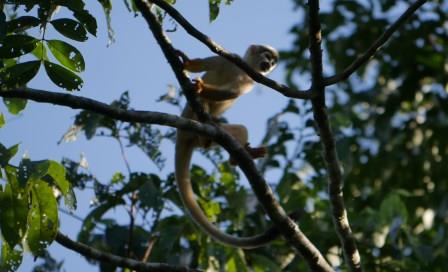
Often seen throughout the Amazon Basin, these monkeys are called “Squirrel” because they’re small and agile and spend most of their life in trees, feeding primarily on fruits and insects.
However, unlike most other New World monkeys, they can’t use their tail for climbing. On average, Squirrel Monkeys range between 9.8 and 14 inches in height and weigh 1.7 to 2.4 pounds.
They have short, brown-grey fur on their head and shoulders, and yellow-ochre fur on their back and extremities.
The fur on their face is black and white, making them vaguely resemble a skeleton. For this reason, the German name for Squirrel Monkeys is Totenkopfaffen, meaning “Death’s Head Monkey.”
READ MORE: New Amazon Animals Discovered!
Which birds live in the rainforest?
Blue-and-Yellow Macaw
The Blue-and-Yellow Macaw is one the largest birds in the forest by length, measuring 81 – 91 cm from the tip of its tail to the top of its head. Blue-and-Yellow refers to the color of its feathers, which are blue on the entire body with some yellow chest.
Along with the Scarlet and Chestnut-fronted Macaw, Blue-and-yellow Macaw can be seen crossing in the skies of the Amazon Rainforest.
Their diets mainly consist of fruit and nuts from native Amazonian trees and palms, which they break with their strong hooked beaks.
They use their tongue to reach into the shell of nuts, and their talons to hang onto trees. Sadly, Blue-and-Yellow Macaw has endangered: Their main threat is the illegal pet trade and habitat fragmentation.
Hoatzin (Opisthocomus hoazin)
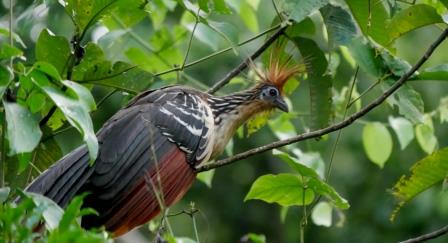
Hoatzin is genetically enigmatic, whose chicks possess claws on two of their wing digits and is also colloquially known as the Stinkbird due to the manure-like odor caused by its unique digestive system.
The noises they make are just as odd, including a bizarre variety of groans, croaks, hisses, and grunts that are often associated with their body movements.
King Vulture (Sarcoramphus papa)
Common throughout Central and South America, King Vultures are arguably among the most beautiful birds of the Amazon Rainforest.
They measure between 26 and 32 inches, with a 4-7 foot wingspan. After the Condor, they’re the largest of all the New World vultures.
It’s believed that the “King” in their name derived from an old Mayan legend that saw King Vultures as messengers between the living and the gods.
Their body is mainly white, with long black feathers on their wings and tails.
They have no feathers on their head and neck, but their skin is vividly colored in red and purple shades on the head, orange on the neck, and yellow on the throat.
Like all vultures, they’re scavengers helping to keep the ecosystem clean of carrion.
Spectacled Owl (Pulsatrix perspicillata)
The Spectacled Owl is the only owl species found in the Amazon rainforest. It’s medium-sized, measuring approximately 18-20 inches in height.
It has a rounded head and no ear tufts, and a dark-feathered face with markings resembling spectacles made of white eyebrows and other white streaks on the cheeks.
The favorite habitat of Spectacled Owls is thick, primary rainforest, but they sometimes move to sparser woodlands when hunting.
They’re solitary birds, most active during the night.
They hunt very effectively by swooping down from their roost to catch their prey.
Any kind of rodent or small mammal can potentially fall prey to the Spectacled Owl… even Sloths!
White-throated Toucan
The White-throated Toucan is the largest and best-known of the Seven Toucan Species of the Ecuadorian Amazon.
The black plumage with a white throat and breast bordered below with a narrow red line. The rump is bright yellow and the crissum (the area around the cloaca) is red.
The bare skin around the eye is blue. The most striking feature is their oversized bill, which is The bill has a yellow tip, upper ridge, and base of the upper mandible, and the base of the lower mandible is blue.
The rest of the bill is mainly black and mainly reddish-brown and measures between 12.2 to 22 cm. Since total length It has a total length of 50–61 cm (19.5–24 in), they look awkward when flying. But their bill is quite light since it’s hollow.
toucans are sociable birds and are often seen flying in small groups, especially at sunset.
They’re omnivores, using their bill to reach for insects, fruit, and small reptiles, as well as other birds and their eggs.
READ MORE: Guide to Ecuadorian Amazon Birds
Which reptiles and reptiles live in the rainforest?
Spectacled Caiman (Caiman crocodilus)
The Spectacled Caiman is known as the common caiman, a medium-sized crocodilian, with a total length in males 2.7 m; is extremely adaptable in terms of habitat requirements, occupying rivers, creeks, lagoons, lakes, borrow pits, swamps, and wetlands.
Female Spectacled Caimans reach sexual maturity at about 1.2 m total length and lay an average of 28-32 eggs in a mound nest, usually during the annual wet season.
Spectacled caiman behavior includes complex sound signals: “warning calls” emitted by females to the young; “distress calls” emitted by juveniles; and, “group cohesion calls” emitted by all individuals.
Males display social behaviors: “vertical tail” and “arch tail” with sub-audible vibrations, barks, and visual displays. The hatchlings and juvenile groups remain together under female care for 12-18 months.
Anaconda
It is the largest snake native to the Americas and found in the northern part of South America (including the Amazon),
In the genus, Eunectes (“good swimmer” in Greek), Anaconda is the heaviest and one of the longest known snake species.
It usually measures about 17-20 feet long, with a weight ranging between 60 and 150 pounds.
They’re non-venomous snakes, killing their prey by wrapping around and adjusting the pressure at every breath, Anacondas dislocate their jaws for swallowing it whole.
They can kill large animals such as Capybara, Tapirs, or even Jaguars, but there’s little evidence of attacks on humans.
Anacondas spend most of their time near water: For this reason, they’re also commonly known as “Boas.”
Poison Dart Frogs
The Ecuador Poison Dart Frog (Ameerega bilinguis), in the family Dendrobatidae found in Colombia, Ecuador, and possibly Peru.
Its natural habitats are forests, rivers, intermittent rivers, freshwater marshes, and intermittent freshwater marshes. It is threatened by habitat loss.
The flashy and brilliant colors of this species constitute a warning for its potential predators that its skin produces poison, a feature that makes it an undesirable food source.
It is very common to hear the male singing from slightly elevated areas in search of a female. After the eggs hatch, the adults transport the tadpoles on their backs to ponds, where the tadpoles complete their development.
South American River Turtle
The South American River Turtle (Podocnemis expansa), is the largest freshwater turtle in the Amazon.
It can grow up to 200 pounds and measure around 3.5 ft long. They’re mostly vegetarian and play an important role in maintaining a healthy riverine ecosystem.
The South American River Turtle (Podocnemis expansa) are scavengers, so they keep the rivers clean by removing dead organic materials.
The presence of River Turtles in the Amazon is considered a sign of the ecological well-being of a given area of the river.
Today, they are now under threat because of hunting, egg collection, habitat loss, and pollution.
Podcast: Play in new window | Download
